
🚀 Work With Us
Private Coaching
Language Editing
Qualitative Coding
✨ Free Resources
Templates & Tools
Short Courses
Articles & Videos

Qualitative Data Analysis Methods
The “Big 6” Qualitative Methods + Examples
By: Kerryn Warren (PhD) | Reviewed By: Eunice Rautenbach (D.Tech) | May 2020 (Updated April 2023)

If you’re new to the world of research, qualitative data analysis can look rather intimidating. So much bulky terminology and so many abstract, fluffy concepts. It certainly can be a minefield!

What (exactly) is qualitative data analysis?
To understand qualitative data analysis, we need to first understand qualitative data – so let’s step back and ask the question, “what exactly is qualitative data?”.
Qualitative data refers to pretty much any data that’s “not numbers” . In other words, it’s not the stuff you measure using a fixed scale or complex equipment, nor do you analyse it using complex statistics or mathematics.
So, if it’s not numbers, what is it?
Words, you guessed? Well… sometimes , yes. Qualitative data can, and often does, take the form of interview transcripts, documents and open-ended survey responses – but it can also involve the interpretation of images and videos. In other words, qualitative isn’t just limited to text-based data.
So, how’s that different from quantitative data, you ask?
Simply put, qualitative research focuses on words, descriptions, concepts or ideas – while quantitative research focuses on numbers and statistics . Qualitative research investigates the “softer side” of things to explore and describe , while quantitative research focuses on the “hard numbers”, to measure differences between variables and the relationships between them. If you’re keen to learn more about the differences between qual and quant, we’ve got a detailed post over here .

So, qualitative analysis is easier than quantitative, right?
Not quite. In many ways, qualitative data can be challenging and time-consuming to analyse and interpret. At the end of your data collection phase (which itself takes a lot of time), you’ll likely have many pages of text-based data or hours upon hours of audio to work through. You might also have subtle nuances of interactions or discussions that have danced around in your mind, or that you scribbled down in messy field notes. All of this needs to work its way into your analysis.
Making sense of all of this is no small task and you shouldn’t underestimate it. Long story short – qualitative analysis can be a lot of work! Of course, quantitative analysis is no piece of cake either, but it’s important to recognise that qualitative analysis still requires a significant investment in terms of time and effort.
Need a helping hand?
The “Big 6” Qualitative Analysis Methods
There are many different types of qualitative data analysis, all of which serve different purposes and have unique strengths and weaknesses . We’ll start by outlining the analysis methods and then we’ll dive into the details for each.
The 6 most popular methods (or at least the ones we see at Grad Coach) are:
- Content analysis
- Narrative analysis
- Discourse analysis
- Thematic analysis
- Grounded theory (GT)
- Interpretive phenomenological analysis (IPA)
QDA Method #1: Qualitative Content Analysis
Content analysis is possibly the most common and straightforward QDA method. At the simplest level, content analysis is used to evaluate patterns within a piece of content (for example, words, phrases or images) or across multiple pieces of content or sources of communication. For example, a collection of newspaper articles or political speeches.
With content analysis, you could, for instance, identify the frequency with which an idea is shared or spoken about – like the number of times a Kardashian is mentioned on Twitter. Or you could identify patterns of deeper underlying interpretations – for instance, by identifying phrases or words in tourist pamphlets that highlight India as an ancient country.
Because content analysis can be used in such a wide variety of ways, it’s important to go into your analysis with a very specific question and goal, or you’ll get lost in the fog. With content analysis, you’ll group large amounts of text into codes , summarise these into categories, and possibly even tabulate the data to calculate the frequency of certain concepts or variables. Because of this, content analysis provides a small splash of quantitative thinking within a qualitative method.
Naturally, while content analysis is widely useful, it’s not without its drawbacks . One of the main issues with content analysis is that it can be very time-consuming , as it requires lots of reading and re-reading of the texts. Also, because of its multidimensional focus on both qualitative and quantitative aspects, it is sometimes accused of losing important nuances in communication.
Content analysis also tends to concentrate on a very specific timeline and doesn’t take into account what happened before or after that timeline. This isn’t necessarily a bad thing though – just something to be aware of. So, keep these factors in mind if you’re considering content analysis. Every analysis method has its limitations , so don’t be put off by these – just be aware of them ! If you’re interested in learning more about content analysis, the video below provides a good starting point.
QDA Method #2: Narrative Analysis
As the name suggests, narrative analysis is all about listening to people telling stories and analysing what that means . Since stories serve a functional purpose of helping us make sense of the world, we can gain insights into the ways that people deal with and make sense of reality by analysing their stories and the ways they’re told.
You could, for example, use narrative analysis to explore whether how something is being said is important. For instance, the narrative of a prisoner trying to justify their crime could provide insight into their view of the world and the justice system. Similarly, analysing the ways entrepreneurs talk about the struggles in their careers or cancer patients telling stories of hope could provide powerful insights into their mindsets and perspectives . Simply put, narrative analysis is about paying attention to the stories that people tell – and more importantly, the way they tell them.
Of course, the narrative approach has its weaknesses , too. Sample sizes are generally quite small due to the time-consuming process of capturing narratives. Because of this, along with the multitude of social and lifestyle factors which can influence a subject, narrative analysis can be quite difficult to reproduce in subsequent research. This means that it’s difficult to test the findings of some of this research.
Similarly, researcher bias can have a strong influence on the results here, so you need to be particularly careful about the potential biases you can bring into your analysis when using this method. Nevertheless, narrative analysis is still a very useful qualitative analysis method – just keep these limitations in mind and be careful not to draw broad conclusions . If you’re keen to learn more about narrative analysis, the video below provides a great introduction to this qualitative analysis method.

QDA Method #3: Discourse Analysis
Discourse is simply a fancy word for written or spoken language or debate . So, discourse analysis is all about analysing language within its social context. In other words, analysing language – such as a conversation, a speech, etc – within the culture and society it takes place. For example, you could analyse how a janitor speaks to a CEO, or how politicians speak about terrorism.
To truly understand these conversations or speeches, the culture and history of those involved in the communication are important factors to consider. For example, a janitor might speak more casually with a CEO in a company that emphasises equality among workers. Similarly, a politician might speak more about terrorism if there was a recent terrorist incident in the country.
So, as you can see, by using discourse analysis, you can identify how culture , history or power dynamics (to name a few) have an effect on the way concepts are spoken about. So, if your research aims and objectives involve understanding culture or power dynamics, discourse analysis can be a powerful method.
Because there are many social influences in terms of how we speak to each other, the potential use of discourse analysis is vast . Of course, this also means it’s important to have a very specific research question (or questions) in mind when analysing your data and looking for patterns and themes, or you might land up going down a winding rabbit hole.
Discourse analysis can also be very time-consuming as you need to sample the data to the point of saturation – in other words, until no new information and insights emerge. But this is, of course, part of what makes discourse analysis such a powerful technique. So, keep these factors in mind when considering this QDA method. Again, if you’re keen to learn more, the video below presents a good starting point.
QDA Method #4: Thematic Analysis
Thematic analysis looks at patterns of meaning in a data set – for example, a set of interviews or focus group transcripts. But what exactly does that… mean? Well, a thematic analysis takes bodies of data (which are often quite large) and groups them according to similarities – in other words, themes . These themes help us make sense of the content and derive meaning from it.
Let’s take a look at an example.
With thematic analysis, you could analyse 100 online reviews of a popular sushi restaurant to find out what patrons think about the place. By reviewing the data, you would then identify the themes that crop up repeatedly within the data – for example, “fresh ingredients” or “friendly wait staff”.
So, as you can see, thematic analysis can be pretty useful for finding out about people’s experiences , views, and opinions . Therefore, if your research aims and objectives involve understanding people’s experience or view of something, thematic analysis can be a great choice.
Since thematic analysis is a bit of an exploratory process, it’s not unusual for your research questions to develop , or even change as you progress through the analysis. While this is somewhat natural in exploratory research, it can also be seen as a disadvantage as it means that data needs to be re-reviewed each time a research question is adjusted. In other words, thematic analysis can be quite time-consuming – but for a good reason. So, keep this in mind if you choose to use thematic analysis for your project and budget extra time for unexpected adjustments.
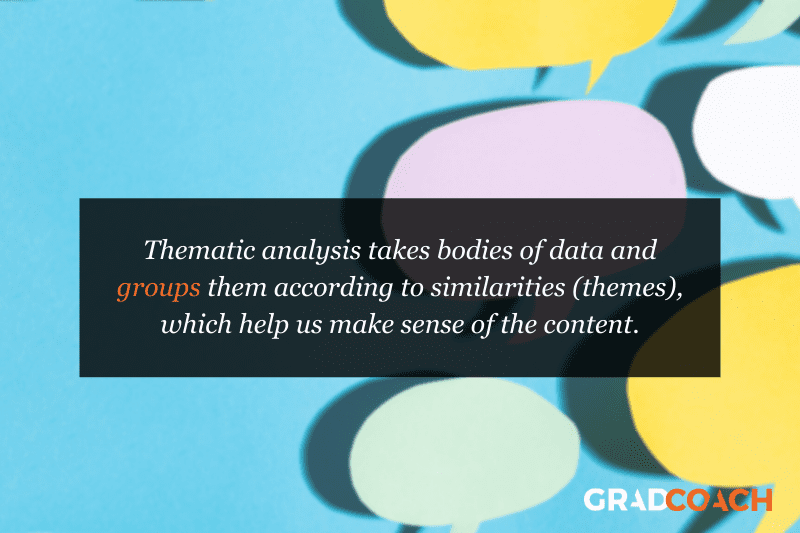
QDA Method #5: Grounded theory (GT)
Grounded theory is a powerful qualitative analysis method where the intention is to create a new theory (or theories) using the data at hand, through a series of “ tests ” and “ revisions ”. Strictly speaking, GT is more a research design type than an analysis method, but we’ve included it here as it’s often referred to as a method.
What’s most important with grounded theory is that you go into the analysis with an open mind and let the data speak for itself – rather than dragging existing hypotheses or theories into your analysis. In other words, your analysis must develop from the ground up (hence the name).
Let’s look at an example of GT in action.
Assume you’re interested in developing a theory about what factors influence students to watch a YouTube video about qualitative analysis. Using Grounded theory , you’d start with this general overarching question about the given population (i.e., graduate students). First, you’d approach a small sample – for example, five graduate students in a department at a university. Ideally, this sample would be reasonably representative of the broader population. You’d interview these students to identify what factors lead them to watch the video.
After analysing the interview data, a general pattern could emerge. For example, you might notice that graduate students are more likely to read a post about qualitative methods if they are just starting on their dissertation journey, or if they have an upcoming test about research methods.
From here, you’ll look for another small sample – for example, five more graduate students in a different department – and see whether this pattern holds true for them. If not, you’ll look for commonalities and adapt your theory accordingly. As this process continues, the theory would develop . As we mentioned earlier, what’s important with grounded theory is that the theory develops from the data – not from some preconceived idea.
So, what are the drawbacks of grounded theory? Well, some argue that there’s a tricky circularity to grounded theory. For it to work, in principle, you should know as little as possible regarding the research question and population, so that you reduce the bias in your interpretation. However, in many circumstances, it’s also thought to be unwise to approach a research question without knowledge of the current literature . In other words, it’s a bit of a “chicken or the egg” situation.
Regardless, grounded theory remains a popular (and powerful) option. Naturally, it’s a very useful method when you’re researching a topic that is completely new or has very little existing research about it, as it allows you to start from scratch and work your way from the ground up .
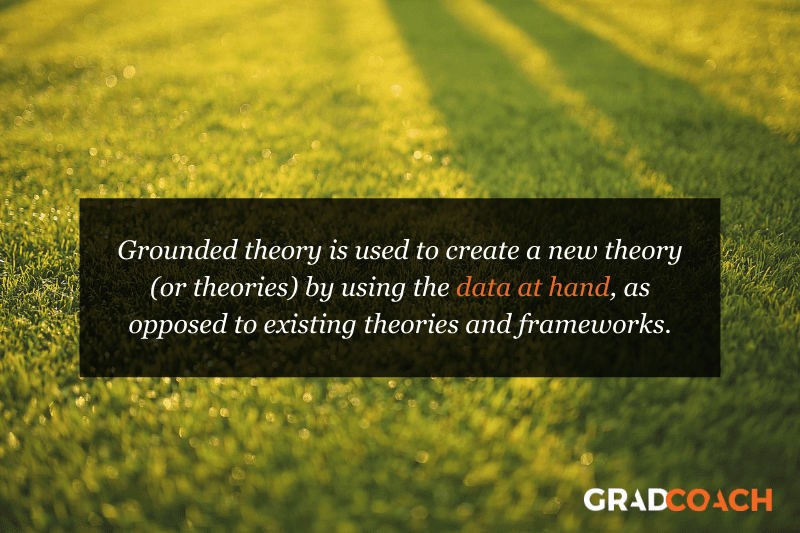
QDA Method #6: Interpretive Phenomenological Analysis (IPA)
Interpretive. Phenomenological. Analysis. IPA . Try saying that three times fast…
Let’s just stick with IPA, okay?
IPA is designed to help you understand the personal experiences of a subject (for example, a person or group of people) concerning a major life event, an experience or a situation . This event or experience is the “phenomenon” that makes up the “P” in IPA. Such phenomena may range from relatively common events – such as motherhood, or being involved in a car accident – to those which are extremely rare – for example, someone’s personal experience in a refugee camp. So, IPA is a great choice if your research involves analysing people’s personal experiences of something that happened to them.
It’s important to remember that IPA is subject – centred . In other words, it’s focused on the experiencer . This means that, while you’ll likely use a coding system to identify commonalities, it’s important not to lose the depth of experience or meaning by trying to reduce everything to codes. Also, keep in mind that since your sample size will generally be very small with IPA, you often won’t be able to draw broad conclusions about the generalisability of your findings. But that’s okay as long as it aligns with your research aims and objectives.
Another thing to be aware of with IPA is personal bias . While researcher bias can creep into all forms of research, self-awareness is critically important with IPA, as it can have a major impact on the results. For example, a researcher who was a victim of a crime himself could insert his own feelings of frustration and anger into the way he interprets the experience of someone who was kidnapped. So, if you’re going to undertake IPA, you need to be very self-aware or you could muddy the analysis.

How to choose the right analysis method
In light of all of the qualitative analysis methods we’ve covered so far, you’re probably asking yourself the question, “ How do I choose the right one? ”
Much like all the other methodological decisions you’ll need to make, selecting the right qualitative analysis method largely depends on your research aims, objectives and questions . In other words, the best tool for the job depends on what you’re trying to build. For example:
- Perhaps your research aims to analyse the use of words and what they reveal about the intention of the storyteller and the cultural context of the time.
- Perhaps your research aims to develop an understanding of the unique personal experiences of people that have experienced a certain event, or
- Perhaps your research aims to develop insight regarding the influence of a certain culture on its members.
As you can probably see, each of these research aims are distinctly different , and therefore different analysis methods would be suitable for each one. For example, narrative analysis would likely be a good option for the first aim, while grounded theory wouldn’t be as relevant.
It’s also important to remember that each method has its own set of strengths, weaknesses and general limitations. No single analysis method is perfect . So, depending on the nature of your research, it may make sense to adopt more than one method (this is called triangulation ). Keep in mind though that this will of course be quite time-consuming.
As we’ve seen, all of the qualitative analysis methods we’ve discussed make use of coding and theme-generating techniques, but the intent and approach of each analysis method differ quite substantially. So, it’s very important to come into your research with a clear intention before you decide which analysis method (or methods) to use.
Start by reviewing your research aims , objectives and research questions to assess what exactly you’re trying to find out – then select a qualitative analysis method that fits. Never pick a method just because you like it or have experience using it – your analysis method (or methods) must align with your broader research aims and objectives.
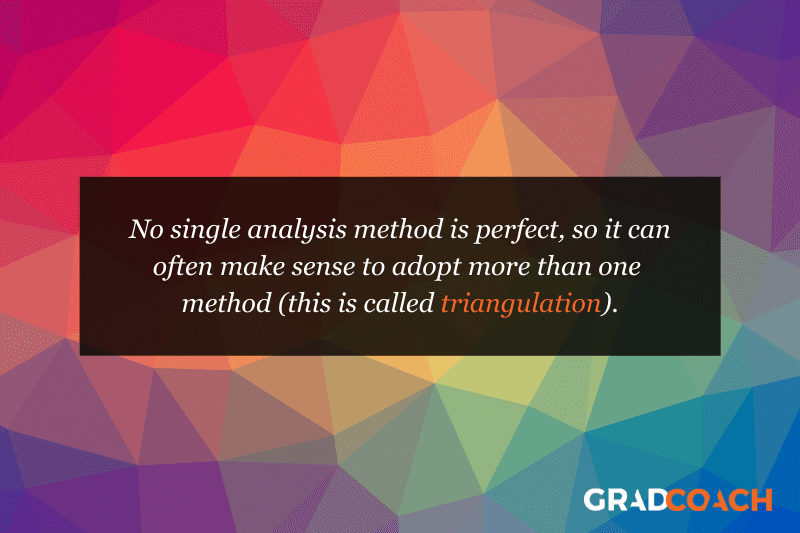
Let’s recap on QDA methods…
In this post, we looked at six popular qualitative data analysis methods:
- First, we looked at content analysis , a straightforward method that blends a little bit of quant into a primarily qualitative analysis.
- Then we looked at narrative analysis , which is about analysing how stories are told.
- Next up was discourse analysis – which is about analysing conversations and interactions.
- Then we moved on to thematic analysis – which is about identifying themes and patterns.
- From there, we went south with grounded theory – which is about starting from scratch with a specific question and using the data alone to build a theory in response to that question.
- And finally, we looked at IPA – which is about understanding people’s unique experiences of a phenomenon.
Of course, these aren’t the only options when it comes to qualitative data analysis, but they’re a great starting point if you’re dipping your toes into qualitative research for the first time.
If you’re still feeling a bit confused, consider our private coaching service , where we hold your hand through the research process to help you develop your best work.

Learn More About Qualitative:

Triangulation: The Ultimate Credibility Enhancer
Triangulation is one of the best ways to enhance the credibility of your research. Learn about the different options here.

Structured, Semi-Structured & Unstructured Interviews
Learn about the differences (and similarities) between the three interview approaches: structured, semi-structured and unstructured.

Qualitative Coding Examples: Process, Values & In Vivo Coding
See real-world examples of qualitative data that has been coded using process coding, values coding and in vivo coding.

In Vivo Coding 101: Full Explainer With Examples
Learn about in vivo coding, a popular qualitative coding technique ideal for studies where the nuances of language are central to the aims.

Process Coding 101: Full Explainer With Examples
Learn about process coding, a popular qualitative coding technique ideal for studies exploring processes, actions and changes over time.
📄 FREE TEMPLATES
Research Topic Ideation
Proposal Writing
Literature Review
Methodology & Analysis
Academic Writing
Referencing & Citing
Apps, Tools & Tricks
The Grad Coach Podcast
89 Comments
This has been very helpful. Thank you.
Thank you madam,
Thank you so much for this information
I wonder it so clear for understand and good for me. can I ask additional query?
Very insightful and useful
Good work done with clear explanations. Thank you.
Thanks so much for the write-up, it’s really good.
Thanks madam . It is very important .
thank you very good
Great presentation
very informative. Thank you!!
This has been very well explained in simple language . It is useful even for a new researcher.
Great to hear that. Good luck with your qualitative data analysis, Pramod!
This is very useful information. And it was very a clear language structured presentation. Thanks a lot.
Thank you so much.
very informative sequential presentation
Precise explanation of method.
Hi, may we use 2 data analysis methods in our qualitative research?
Thanks for your comment. Most commonly, one would use one type of analysis method, but it depends on your research aims and objectives.
You explained it in very simple language, everyone can understand it. Thanks so much.
Thank you very much, this is very helpful. It has been explained in a very simple manner that even a layman understands
Thank nicely explained can I ask is Qualitative content analysis the same as thematic analysis?
Thanks for your comment. No, QCA and thematic are two different types of analysis. This article might help clarify – https://onlinelibrary.wiley.com/doi/10.1111/nhs.12048
This is my first time to come across a well explained data analysis. so helpful.
I have thoroughly enjoyed your explanation of the six qualitative analysis methods. This is very helpful. Thank you!
Thank you very much, this is well explained and useful
i need a citation of your book.
Thanks a lot , remarkable indeed, enlighting to the best
Hi Derek, What other theories/methods would you recommend when the data is a whole speech?
Keep writing useful artikel.
It is important concept about QDA and also the way to express is easily understandable, so thanks for all.
Thank you, this is well explained and very useful.
Very helpful .Thanks.
Hi there! Very well explained. Simple but very useful style of writing. Please provide the citation of the text. warm regards
The session was very helpful and insightful. Thank you
This was very helpful and insightful. Easy to read and understand
As a professional academic writer, this has been so informative and educative. Keep up the good work Grad Coach you are unmatched with quality content for sure.
Keep up the good work Grad Coach you are unmatched with quality content for sure.
Its Great and help me the most. A Million Thanks you Dr.
It is a very nice work
Very insightful. Please, which of this approach could be used for a research that one is trying to elicit students’ misconceptions in a particular concept ?
This is Amazing and well explained, thanks
great overview
What do we call a research data analysis method that one use to advise or determining the best accounting tool or techniques that should be adopted in a company.
Informative video, explained in a clear and simple way. Kudos
Waoo! I have chosen method wrong for my data analysis. But I can revise my work according to this guide. Thank you so much for this helpful lecture.
This has been very helpful. It gave me a good view of my research objectives and how to choose the best method. Thematic analysis it is.
Very helpful indeed. Thanku so much for the insight.
This was incredibly helpful.
Very helpful.
very educative
Nicely written especially for novice academic researchers like me! Thank you.
choosing a right method for a paper is always a hard job for a student, this is a useful information, but it would be more useful personally for me, if the author provide me with a little bit more information about the data analysis techniques in type of explanatory research. Can we use qualitative content analysis technique for explanatory research ? or what is the suitable data analysis method for explanatory research in social studies?
that was very helpful for me. because these details are so important to my research. thank you very much
I learnt a lot. Thank you
Relevant and Informative, thanks !
Well-planned and organized, thanks much! 🙂
I have reviewed qualitative data analysis in a simplest way possible. The content will highly be useful for developing my book on qualitative data analysis methods. Cheers!
Clear explanation on qualitative and how about Case study
This was helpful. Thank you
This was really of great assistance, it was just the right information needed. Explanation very clear and follow.
Wow, Thanks for making my life easy
This was helpful thanks .
Very helpful…. clear and written in an easily understandable manner. Thank you.
This was so helpful as it was easy to understand. I’m a new to research thank you so much.
so educative…. but Ijust want to know which method is coding of the qualitative or tallying done?
Thank you for the great content, I have learnt a lot. So helpful
precise and clear presentation with simple language and thank you for that.
very informative content, thank you.
You guys are amazing on YouTube on this platform. Your teachings are great, educative, and informative. kudos!
Brilliant Delivery. You made a complex subject seem so easy. Well done.
Beautifully explained.
Thanks a lot
Is there a video the captures the practical process of coding using automated applications?
Thanks for the comment. We don’t recommend using automated applications for coding, as they are not sufficiently accurate in our experience.
content analysis can be qualitative research?
THANK YOU VERY MUCH.
Thank you very much for such a wonderful content
do you have any material on Data collection
What a powerful explanation of the QDA methods. Thank you.
Great explanation both written and Video. i have been using of it on a day to day working of my thesis project in accounting and finance. Thank you very much for your support.
very helpful, thank you so much
The tutorial is useful. I benefited a lot.
This is an eye opener for me and very informative, I have used some of your guidance notes on my Thesis, I wonder if you can assist with your 1. name of your book, year of publication, topic etc., this is for citing in my Bibliography,
I certainly hope to hear from you
A very useful article for anyone who wants to get an accurate overview of the QDA toolkit in a condensed form. The settlement of the three pillars of the application of qualitative analysis is impressive: Conceptual direction – emotional indicators – influence of the external factor. I think that understanding the complex interaction between these three elements is one way to increase the effectiveness of QDA. I wish the team success!
Submit a Comment Cancel reply
Your email address will not be published. Required fields are marked *
Save my name, email, and website in this browser for the next time I comment.
Submit Comment
- Print Friendly
- Skip to main content
- Skip to primary sidebar
- Skip to footer
- QuestionPro

- Solutions Industries Gaming Automotive Sports and events Education Government Travel & Hospitality Financial Services Healthcare Cannabis Technology Use Case AskWhy Communities Audience Contactless surveys Mobile LivePolls Member Experience GDPR Positive People Science 360 Feedback Surveys
- Resources Blog eBooks Survey Templates Case Studies Training Help center
Home Market Research
Qualitative Data Analysis: What is it, Methods + Examples

In a world rich with information and narrative, understanding the deeper layers of human experiences requires a unique vision that goes beyond numbers and figures. This is where the power of qualitative data analysis comes to light.
In this blog, we’ll learn about qualitative data analysis, explore its methods, and provide real-life examples showcasing its power in uncovering insights.
What is Qualitative Data Analysis?
Qualitative data analysis is a systematic process of examining non-numerical data to extract meaning, patterns, and insights.
In contrast to quantitative analysis, which focuses on numbers and statistical metrics, the qualitative study focuses on the qualitative aspects of data, such as text, images, audio, and videos. It seeks to understand every aspect of human experiences, perceptions, and behaviors by examining the data’s richness.
Companies frequently conduct this analysis on customer feedback. You can collect qualitative data from reviews, complaints, chat messages, interactions with support centers, customer interviews, case notes, or even social media comments. This kind of data holds the key to understanding customer sentiments and preferences in a way that goes beyond mere numbers.
Importance of Qualitative Data Analysis
Qualitative data analysis plays a crucial role in your research and decision-making process across various disciplines. Let’s explore some key reasons that underline the significance of this analysis:
In-Depth Understanding
It enables you to explore complex and nuanced aspects of a phenomenon, delving into the ‘how’ and ‘why’ questions. This method provides you with a deeper understanding of human behavior, experiences, and contexts that quantitative approaches might not capture fully.
Contextual Insight
You can use this analysis to give context to numerical data. It will help you understand the circumstances and conditions that influence participants’ thoughts, feelings, and actions. This contextual insight becomes essential for generating comprehensive explanations.
Theory Development
You can generate or refine hypotheses via qualitative data analysis. As you analyze the data attentively, you can form hypotheses, concepts, and frameworks that will drive your future research and contribute to theoretical advances.
Participant Perspectives
When performing qualitative research, you can highlight participant voices and opinions. This approach is especially useful for understanding marginalized or underrepresented people, as it allows them to communicate their experiences and points of view.
Exploratory Research
The analysis is frequently used at the exploratory stage of your project. It assists you in identifying important variables, developing research questions, and designing quantitative studies that will follow.
Types of Qualitative Data
When conducting qualitative research, you can use several qualitative data collection methods , and here you will come across many sorts of qualitative data that can provide you with unique insights into your study topic. These data kinds add new views and angles to your understanding and analysis.
Interviews and Focus Groups
Interviews and focus groups will be among your key methods for gathering qualitative data. Interviews are one-on-one talks in which participants can freely share their thoughts, experiences, and opinions.
Focus groups, on the other hand, are discussions in which members interact with one another, resulting in dynamic exchanges of ideas. Both methods provide rich qualitative data and direct access to participant perspectives.
Observations and Field Notes
Observations and field notes are another useful sort of qualitative data. You can immerse yourself in the research environment through direct observation, carefully documenting behaviors, interactions, and contextual factors.
These observations will be recorded in your field notes, providing a complete picture of the environment and the behaviors you’re researching. This data type is especially important for comprehending behavior in their natural setting.
Textual and Visual Data
Textual and visual data include a wide range of resources that can be qualitatively analyzed. Documents, written narratives, and transcripts from various sources, such as interviews or speeches, are examples of textual data.
Photographs, films, and even artwork provide a visual layer to your research. These forms of data allow you to investigate what is spoken and the underlying emotions, details, and symbols expressed by language or pictures.
When to Choose Qualitative Data Analysis over Quantitative Data Analysis
As you begin your research journey, understanding why the analysis of qualitative data is important will guide your approach to understanding complex events. If you analyze qualitative data, it will provide new insights that complement quantitative methodologies, which will give you a broader understanding of your study topic.
It is critical to know when to use qualitative analysis over quantitative procedures. You can prefer qualitative data analysis when:
- Complexity Reigns: When your research questions involve deep human experiences, motivations, or emotions, qualitative research excels at revealing these complexities.
- Exploration is Key: Qualitative analysis is ideal for exploratory research. It will assist you in understanding a new or poorly understood topic before formulating quantitative hypotheses.
- Context Matters: If you want to understand how context affects behaviors or results, qualitative data analysis provides the depth needed to grasp these relationships.
- Unanticipated Findings: When your study provides surprising new viewpoints or ideas, qualitative analysis helps you to delve deeply into these emerging themes.
- Subjective Interpretation is Vital: When it comes to understanding people’s subjective experiences and interpretations, qualitative data analysis is the way to go.
You can make informed decisions regarding the right approach for your research objectives if you understand the importance of qualitative analysis and recognize the situations where it shines.
Qualitative Data Analysis Methods and Examples
Exploring various qualitative data analysis methods will provide you with a wide collection for making sense of your research findings. Once the data has been collected, you can choose from several analysis methods based on your research objectives and the data type you’ve collected.
There are five main methods for analyzing qualitative data. Each method takes a distinct approach to identifying patterns, themes, and insights within your qualitative data. They are:
Method 1: Content Analysis
Content analysis is a methodical technique for analyzing textual or visual data in a structured manner. In this method, you will categorize qualitative data by splitting it into manageable pieces and assigning the manual coding process to these units.
As you go, you’ll notice ongoing codes and designs that will allow you to conclude the content. This method is very beneficial for detecting common ideas, concepts, or themes in your data without losing the context.
Steps to Do Content Analysis
Follow these steps when conducting content analysis:
- Collect and Immerse: Begin by collecting the necessary textual or visual data. Immerse yourself in this data to fully understand its content, context, and complexities.
- Assign Codes and Categories: Assign codes to relevant data sections that systematically represent major ideas or themes. Arrange comparable codes into groups that cover the major themes.
- Analyze and Interpret: Develop a structured framework from the categories and codes. Then, evaluate the data in the context of your research question, investigate relationships between categories, discover patterns, and draw meaning from these connections.
Benefits & Challenges
There are various advantages to using content analysis:
- Structured Approach: It offers a systematic approach to dealing with large data sets and ensures consistency throughout the research.
- Objective Insights: This method promotes objectivity, which helps to reduce potential biases in your study.
- Pattern Discovery: Content analysis can help uncover hidden trends, themes, and patterns that are not always obvious.
- Versatility: You can apply content analysis to various data formats, including text, internet content, images, etc.
However, keep in mind the challenges that arise:
- Subjectivity: Even with the best attempts, a certain bias may remain in coding and interpretation.
- Complexity: Analyzing huge data sets requires time and great attention to detail.
- Contextual Nuances: Content analysis may not capture all of the contextual richness that qualitative data analysis highlights.
Example of Content Analysis
Suppose you’re conducting market research and looking at customer feedback on a product. As you collect relevant data and analyze feedback, you’ll see repeating codes like “price,” “quality,” “customer service,” and “features.” These codes are organized into categories such as “positive reviews,” “negative reviews,” and “suggestions for improvement.”
According to your findings, themes such as “price” and “customer service” stand out and show that pricing and customer service greatly impact customer satisfaction. This example highlights the power of content analysis for obtaining significant insights from large textual data collections.
Method 2: Thematic Analysis
Thematic analysis is a well-structured procedure for identifying and analyzing recurring themes in your data. As you become more engaged in the data, you’ll generate codes or short labels representing key concepts. These codes are then organized into themes, providing a consistent framework for organizing and comprehending the substance of the data.
The analysis allows you to organize complex narratives and perspectives into meaningful categories, which will allow you to identify connections and patterns that may not be visible at first.
Steps to Do Thematic Analysis
Follow these steps when conducting a thematic analysis:
- Code and Group: Start by thoroughly examining the data and giving initial codes that identify the segments. To create initial themes, combine relevant codes.
- Code and Group: Begin by engaging yourself in the data, assigning first codes to notable segments. To construct basic themes, group comparable codes together.
- Analyze and Report: Analyze the data within each theme to derive relevant insights. Organize the topics into a consistent structure and explain your findings, along with data extracts that represent each theme.
Thematic analysis has various benefits:
- Structured Exploration: It is a method for identifying patterns and themes in complex qualitative data.
- Comprehensive knowledge: Thematic analysis promotes an in-depth understanding of the complications and meanings of the data.
- Application Flexibility: This method can be customized to various research situations and data kinds.
However, challenges may arise, such as:
- Interpretive Nature: Interpreting qualitative data in thematic analysis is vital, and it is critical to manage researcher bias.
- Time-consuming: The study can be time-consuming, especially with large data sets.
- Subjectivity: The selection of codes and topics might be subjective.
Example of Thematic Analysis
Assume you’re conducting a thematic analysis on job satisfaction interviews. Following your immersion in the data, you assign initial codes such as “work-life balance,” “career growth,” and “colleague relationships.” As you organize these codes, you’ll notice themes develop, such as “Factors Influencing Job Satisfaction” and “Impact on Work Engagement.”
Further investigation reveals the tales and experiences included within these themes and provides insights into how various elements influence job satisfaction. This example demonstrates how thematic analysis can reveal meaningful patterns and insights in qualitative data.
Method 3: Narrative Analysis
The narrative analysis involves the narratives that people share. You’ll investigate the histories in your data, looking at how stories are created and the meanings they express. This method is excellent for learning how people make sense of their experiences through narrative.
Steps to Do Narrative Analysis
The following steps are involved in narrative analysis:
- Gather and Analyze: Start by collecting narratives, such as first-person tales, interviews, or written accounts. Analyze the stories, focusing on the plot, feelings, and characters.
- Find Themes: Look for recurring themes or patterns in various narratives. Think about the similarities and differences between these topics and personal experiences.
- Interpret and Extract Insights: Contextualize the narratives within their larger context. Accept the subjective nature of each narrative and analyze the narrator’s voice and style. Extract insights from the tales by diving into the emotions, motivations, and implications communicated by the stories.
There are various advantages to narrative analysis:
- Deep Exploration: It lets you look deeply into people’s personal experiences and perspectives.
- Human-Centered: This method prioritizes the human perspective, allowing individuals to express themselves.
However, difficulties may arise, such as:
- Interpretive Complexity: Analyzing narratives requires dealing with the complexities of meaning and interpretation.
- Time-consuming: Because of the richness and complexities of tales, working with them can be time-consuming.
Example of Narrative Analysis
Assume you’re conducting narrative analysis on refugee interviews. As you read the stories, you’ll notice common themes of toughness, loss, and hope. The narratives provide insight into the obstacles that refugees face, their strengths, and the dreams that guide them.
The analysis can provide a deeper insight into the refugees’ experiences and the broader social context they navigate by examining the narratives’ emotional subtleties and underlying meanings. This example highlights how narrative analysis can reveal important insights into human stories.
Method 4: Grounded Theory Analysis
Grounded theory analysis is an iterative and systematic approach that allows you to create theories directly from data without being limited by pre-existing hypotheses. With an open mind, you collect data and generate early codes and labels that capture essential ideas or concepts within the data.
As you progress, you refine these codes and increasingly connect them, eventually developing a theory based on the data. Grounded theory analysis is a dynamic process for developing new insights and hypotheses based on details in your data.
Steps to Do Grounded Theory Analysis
Grounded theory analysis requires the following steps:
- Initial Coding: First, immerse yourself in the data, producing initial codes that represent major concepts or patterns.
- Categorize and Connect: Using axial coding, organize the initial codes, which establish relationships and connections between topics.
- Build the Theory: Focus on creating a core category that connects the codes and themes. Regularly refine the theory by comparing and integrating new data, ensuring that it evolves organically from the data.
Grounded theory analysis has various benefits:
- Theory Generation: It provides a one-of-a-kind opportunity to generate hypotheses straight from data and promotes new insights.
- In-depth Understanding: The analysis allows you to deeply analyze the data and reveal complex relationships and patterns.
- Flexible Process: This method is customizable and ongoing, which allows you to enhance your research as you collect additional data.
However, challenges might arise with:
- Time and Resources: Because grounded theory analysis is a continuous process, it requires a large commitment of time and resources.
- Theoretical Development: Creating a grounded theory involves a thorough understanding of qualitative data analysis software and theoretical concepts.
- Interpretation of Complexity: Interpreting and incorporating a newly developed theory into existing literature can be intellectually hard.
Example of Grounded Theory Analysis
Assume you’re performing a grounded theory analysis on workplace collaboration interviews. As you open code the data, you will discover notions such as “communication barriers,” “team dynamics,” and “leadership roles.” Axial coding demonstrates links between these notions, emphasizing the significance of efficient communication in developing collaboration.
You create the core “Integrated Communication Strategies” category through selective coding, which unifies new topics.
This theory-driven category serves as the framework for understanding how numerous aspects contribute to effective team collaboration. This example shows how grounded theory analysis allows you to generate a theory directly from the inherent nature of the data.
Method 5: Discourse Analysis
Discourse analysis focuses on language and communication. You’ll look at how language produces meaning and how it reflects power relations, identities, and cultural influences. This strategy examines what is said and how it is said; the words, phrasing, and larger context of communication.
The analysis is precious when investigating power dynamics, identities, and cultural influences encoded in language. By evaluating the language used in your data, you can identify underlying assumptions, cultural standards, and how individuals negotiate meaning through communication.
Steps to Do Discourse Analysis
Conducting discourse analysis entails the following steps:
- Select Discourse: For analysis, choose language-based data such as texts, speeches, or media content.
- Analyze Language: Immerse yourself in the conversation, examining language choices, metaphors, and underlying assumptions.
- Discover Patterns: Recognize the dialogue’s reoccurring themes, ideologies, and power dynamics. To fully understand the effects of these patterns, put them in their larger context.
There are various advantages of using discourse analysis:
- Understanding Language: It provides an extensive understanding of how language builds meaning and influences perceptions.
- Uncovering Power Dynamics: The analysis reveals how power dynamics appear via language.
- Cultural Insights: This method identifies cultural norms, beliefs, and ideologies stored in communication.
However, the following challenges may arise:
- Complexity of Interpretation: Language analysis involves navigating multiple levels of nuance and interpretation.
- Subjectivity: Interpretation can be subjective, so controlling researcher bias is important.
- Time-Intensive: Discourse analysis can take a lot of time because careful linguistic study is required in this analysis.
Example of Discourse Analysis
Consider doing discourse analysis on media coverage of a political event. You notice repeating linguistic patterns in news articles that depict the event as a conflict between opposing parties. Through deconstruction, you can expose how this framing supports particular ideologies and power relations.
You can illustrate how language choices influence public perceptions and contribute to building the narrative around the event by analyzing the speech within the broader political and social context. This example shows how discourse analysis can reveal hidden power dynamics and cultural influences on communication.
How to do Qualitative Data Analysis with the QuestionPro Research suite?
QuestionPro is a popular survey and research platform that offers tools for collecting and analyzing qualitative and quantitative data. Follow these general steps for conducting qualitative data analysis using the QuestionPro Research Suite:
- Collect Qualitative Data: Set up your survey to capture qualitative responses. It might involve open-ended questions, text boxes, or comment sections where participants can provide detailed responses.
- Export Qualitative Responses: Export the responses once you’ve collected qualitative data through your survey. QuestionPro typically allows you to export survey data in various formats, such as Excel or CSV.
- Prepare Data for Analysis: Review the exported data and clean it if necessary. Remove irrelevant or duplicate entries to ensure your data is ready for analysis.
- Code and Categorize Responses: Segment and label data, letting new patterns emerge naturally, then develop categories through axial coding to structure the analysis.
- Identify Themes: Analyze the coded responses to identify recurring themes, patterns, and insights. Look for similarities and differences in participants’ responses.
- Generate Reports and Visualizations: Utilize the reporting features of QuestionPro to create visualizations, charts, and graphs that help communicate the themes and findings from your qualitative research.
- Interpret and Draw Conclusions: Interpret the themes and patterns you’ve identified in the qualitative data. Consider how these findings answer your research questions or provide insights into your study topic.
- Integrate with Quantitative Data (if applicable): If you’re also conducting quantitative research using QuestionPro, consider integrating your qualitative findings with quantitative results to provide a more comprehensive understanding.
Qualitative data analysis is vital in uncovering various human experiences, views, and stories. If you’re ready to transform your research journey and apply the power of qualitative analysis, now is the moment to do it. Book a demo with QuestionPro today and begin your journey of exploration.
LEARN MORE FREE TRIAL
MORE LIKE THIS

QuestionPro Journey Management: 2024 Review — Tuesday CX Thoughts
Jan 7, 2025

Quasi-Experimental Design: What it is, Types & Examples
Jan 6, 2025

Baseline Survey: What is, Purpose, Process, & Best Practices
Jan 3, 2025

Prospective vs Retrospective Studies: Key Differences to Know
Jan 1, 2025
Other categories
- Academic Research
- Artificial Intelligence
- Assessments
- Brand Awareness
- Case Studies
- Communities
- Consumer Insights
- Customer effort score
- Customer Engagement
- Customer Experience
- Customer Loyalty
- Customer Research
- Customer Satisfaction
- Employee Benefits
- Employee Engagement
- Employee Retention
- Friday Five
- General Data Protection Regulation
- Insights Hub
- Life@QuestionPro
- Market Research
- Mobile diaries
- Mobile Surveys
- New Features
- Online Communities
- Question Types
- Questionnaire
- QuestionPro Products
- Release Notes
- Research Tools and Apps
- Revenue at Risk
- Survey Templates
- Training Tips
- Tuesday CX Thoughts (TCXT)
- Uncategorized
- What’s Coming Up
- Workforce Intelligence
- Privacy Policy

Home » Qualitative Research – Methods, Analysis Types and Guide
Qualitative Research – Methods, Analysis Types and Guide
Table of Contents
Qualitative research is a method of inquiry that seeks to understand human experiences, behaviors, and interactions by exploring them in-depth. Unlike quantitative research, which focuses on numerical data, qualitative research delves into meanings, perceptions, and subjective experiences. It is widely used in fields such as sociology, psychology, education, healthcare, and business to uncover insights that are difficult to capture through numerical data.
This article explores the methods of qualitative research, types of qualitative analysis, and a comprehensive guide to conducting a qualitative study.

Qualitative Research
Qualitative research is a non-numerical method of data collection and analysis that focuses on understanding phenomena from the perspective of participants. It prioritizes depth over breadth and aims to explore the “why” and “how” behind human behaviors and social phenomena.
For example, qualitative research might examine how individuals cope with chronic illness by conducting interviews to explore their experiences and emotions in detail.
Characteristics of Qualitative Research
- Exploratory Nature: Focuses on exploring new areas of study or understanding complex phenomena.
- Contextual Understanding: Emphasizes the importance of context in interpreting findings.
- Subjectivity: Values participants’ perspectives and experiences as central to the research.
- Flexibility: Allows for adjustments to research design based on emerging insights.
- Rich Data: Produces detailed and nuanced descriptions rather than numerical summaries.
Methods of Qualitative Research
1. interviews.
Interviews involve one-on-one conversations between the researcher and participants to gather in-depth insights.
- Types: Structured, semi-structured, or unstructured interviews.
- Example: Interviewing teachers to understand their experiences with online education.
2. Focus Groups
Focus groups consist of facilitated discussions with small groups of participants to explore shared experiences or perspectives.
- Example: Conducting a focus group with patients to understand their satisfaction with healthcare services.
3. Observation
Observation involves studying participants in their natural environment to capture behaviors, interactions, and contexts.
- Types: Participant observation (researcher participates) and non-participant observation (researcher observes without involvement).
- Example: Observing interactions in a classroom to understand teaching dynamics.
4. Case Studies
Case studies provide an in-depth examination of a single individual, group, event, or organization.
- Example: Analyzing the impact of a leadership change within a specific company.
5. Ethnography
Ethnography focuses on studying cultural practices and social norms by immersing the researcher in the community.
- Example: Exploring the cultural traditions of an indigenous group through prolonged fieldwork.
6. Document Analysis
Document analysis involves analyzing written or visual materials, such as reports, diaries, photographs, or social media posts.
- Example: Reviewing company policies to understand workplace diversity practices.
7. Narrative Research
Narrative research examines personal stories and experiences to understand individual perspectives.
- Example: Analyzing the life stories of refugees to explore their resilience and adaptation processes.
Types of Qualitative Data Analysis
1. thematic analysis.
Thematic analysis involves identifying, analyzing, and reporting patterns (themes) within qualitative data.
- Steps: Familiarization, coding, theme identification, and interpretation.
- Example: Analyzing interview transcripts to uncover themes related to work-life balance.
2. Content Analysis
Content analysis systematically categorizes textual or visual data to identify patterns and themes.
- Example: Analyzing social media comments to explore public opinions on environmental policies.
3. Grounded Theory
Grounded theory focuses on developing a theory grounded in the data collected.
- Steps: Open coding, axial coding, and selective coding.
- Example: Developing a theory about customer satisfaction based on retail feedback.
4. Narrative Analysis
Narrative analysis examines the structure and content of personal stories to uncover meaning.
- Example: Analyzing interviews with survivors of natural disasters to understand coping strategies.
5. Discourse Analysis
Discourse analysis explores how language is used in specific contexts to construct meaning and social realities.
- Example: Analyzing political speeches to identify persuasive strategies.
6. Framework Analysis
Framework analysis uses a structured approach to analyze data within a thematic framework.
- Example: Evaluating healthcare professionals’ experiences with new policies using predefined themes.
7. Phenomenological Analysis
Phenomenological analysis focuses on understanding the lived experiences of participants.
- Example: Exploring the experiences of first-time parents to understand emotional transitions.

Guide to Conducting Qualitative Research
Step 1: define the research problem.
Clearly articulate the purpose of your study and the research questions you aim to address.
- Example: “What are the experiences of remote workers during the COVID-19 pandemic?”
Step 2: Choose a Research Method
Select a method that aligns with your research objectives and the nature of the phenomenon.
- Example: Conducting semi-structured interviews to gather personal insights.
Step 3: Identify Participants
Choose participants who can provide rich and relevant data for your study.
- Example: Selecting remote workers from diverse industries to capture varied perspectives.
Step 4: Collect Data
Use the chosen method to gather detailed and context-rich data.
- Example: Conducting interviews via video calls and recording responses for analysis.
Step 5: Analyze Data
Apply an appropriate qualitative analysis method to identify patterns, themes, or insights.
- Example: Using thematic analysis to group common challenges faced by remote workers.
Step 6: Interpret Findings
Contextualize your findings within the existing literature and draw meaningful conclusions.
- Example: Comparing your findings on remote work challenges with studies conducted pre-pandemic.
Step 7: Present Results
Communicate your results clearly, using direct quotes, narratives, or visualizations to support your findings.
Advantages of Qualitative Research
- Rich Insights: Provides deep understanding of complex phenomena.
- Flexibility: Adapts to the research context and emerging findings.
- Contextual Detail: Captures the nuances of participants’ experiences and environments.
- Exploratory Nature: Ideal for exploring new or poorly understood topics.
Challenges of Qualitative Research
- Time-Intensive: Data collection and analysis can be lengthy processes.
- Subjectivity: Risk of researcher bias influencing data interpretation.
- Generalizability: Findings are context-specific and may not apply universally.
- Data Management: Handling and analyzing large volumes of qualitative data can be challenging.
Applications of Qualitative Research
- Healthcare: Understanding patient experiences with chronic illnesses.
- Education: Exploring teacher perceptions of new classroom technologies.
- Marketing: Investigating consumer attitudes toward a brand.
- Social Work: Analyzing community responses to social programs.
- Psychology: Examining coping mechanisms among individuals facing trauma.
Qualitative research is a powerful method for exploring the human experience and understanding complex social phenomena. By employing diverse methods such as interviews, focus groups, and ethnography, and using robust analytical techniques, qualitative researchers uncover rich, detailed insights that are essential for addressing real-world challenges. Although it requires careful planning, execution, and interpretation, qualitative research offers unparalleled depth and contextual understanding, making it indispensable across disciplines.
- Creswell, J. W., & Poth, C. N. (2018). Qualitative Inquiry and Research Design: Choosing Among Five Approaches . Sage Publications.
- Flick, U. (2018). An Introduction to Qualitative Research . Sage Publications.
- Denzin, N. K., & Lincoln, Y. S. (2017). The Sage Handbook of Qualitative Research . Sage Publications.
- Merriam, S. B. (2009). Qualitative Research: A Guide to Design and Implementation . Jossey-Bass.
- Braun, V., & Clarke, V. (2006). Using Thematic Analysis in Psychology . Qualitative Research in Psychology.
About the author
Muhammad Hassan
Researcher, Academic Writer, Web developer
You may also like

Observational Research – Methods and Guide

Correlational Research – Methods, Types and...

Phenomenology – Methods, Examples and Guide

Applied Research – Types, Methods and Examples

Textual Analysis – Types, Examples and Guide

Basic Research – Types, Methods and Examples

Qualitative Data Analysis
Qualitative data refers to non-numeric information such as interview transcripts, notes, video and audio recordings, images and text documents. Qualitative data analysis can be divided into the following five categories:
1. Content analysis . This refers to the process of categorizing verbal or behavioural data to classify, summarize and tabulate the data.
2. Narrative analysis . This method involves the reformulation of stories presented by respondents taking into account context of each case and different experiences of each respondent. In other words, narrative analysis is the revision of primary qualitative data by researcher.
3. Discourse analysis . A method of analysis of naturally occurring talk and all types of written text.
4. Framework analysis . This is more advanced method that consists of several stages such as familiarization, identifying a thematic framework, coding, charting, mapping and interpretation.
5. Grounded theory . This method of qualitative data analysis starts with an analysis of a single case to formulate a theory. Then, additional cases are examined to see if they contribute to the theory.
Qualitative data analysis can be conducted through the following three steps:
Step 1: Developing and Applying Codes . Coding can be explained as categorization of data. A ‘code’ can be a word or a short phrase that represents a theme or an idea. All codes need to be assigned meaningful titles. A wide range of non-quantifiable elements such as events, behaviours, activities, meanings etc. can be coded.
There are three types of coding:
- Open coding . The initial organization of raw data to try to make sense of it.
- Axial coding . Interconnecting and linking the categories of codes.
- Selective coding . Formulating the story through connecting the categories.
Coding can be done manually or using qualitative data analysis software such as
NVivo, Atlas ti 6.0, HyperRESEARCH 2.8, Max QDA and others.
When using manual coding you can use folders, filing cabinets, wallets etc. to gather together materials that are examples of similar themes or analytic ideas. Manual method of coding in qualitative data analysis is rightly considered as labour-intensive, time-consuming and outdated.
In computer-based coding, on the other hand, physical files and cabinets are replaced with computer based directories and files. When choosing software for qualitative data analysis you need to consider a wide range of factors such as the type and amount of data you need to analyse, time required to master the software and cost considerations.
Moreover, it is important to get confirmation from your dissertation supervisor prior to application of any specific qualitative data analysis software.
The following table contains examples of research titles, elements to be coded and identification of relevant codes:
Qualitative data coding
Step 2: Identifying themes, patterns and relationships . Unlike quantitative methods , in qualitative data analysis there are no universally applicable techniques that can be applied to generate findings. Analytical and critical thinking skills of researcher plays significant role in data analysis in qualitative studies. Therefore, no qualitative study can be repeated to generate the same results.
Nevertheless, there is a set of techniques that you can use to identify common themes, patterns and relationships within responses of sample group members in relation to codes that have been specified in the previous stage.
Specifically, the most popular and effective methods of qualitative data interpretation include the following:
- Word and phrase repetitions – scanning primary data for words and phrases most commonly used by respondents, as well as, words and phrases used with unusual emotions;
- Primary and secondary data comparisons – comparing the findings of interview/focus group/observation/any other qualitative data collection method with the findings of literature review and discussing differences between them;
- Search for missing information – discussions about which aspects of the issue was not mentioned by respondents, although you expected them to be mentioned;
- Metaphors and analogues – comparing primary research findings to phenomena from a different area and discussing similarities and differences.
Step 3: Summarizing the data . At this last stage you need to link research findings to hypotheses or research aim and objectives. When writing data analysis chapter, you can use noteworthy quotations from the transcript in order to highlight major themes within findings and possible contradictions.
It is important to note that the process of qualitative data analysis described above is general and different types of qualitative studies may require slightly different methods of data analysis.
My e-book, The Ultimate Guide to Writing a Dissertation in Business Studies: a step by step approach contains a detailed, yet simple explanation of qualitative data analysis methods . The e-book explains all stages of the research process starting from the selection of the research area to writing personal reflection. Important elements of dissertations such as research philosophy, research approach, research design, methods of data collection and data analysis are explained in simple words. John Dudovskiy


The Ultimate Guide to Qualitative Research - Part 2: Handling Qualitative Data

- Handling qualitative data
- Transcripts
- Field notes
- Survey data and responses
- Visual and audio data
- Data organization
- Data coding
- Coding frame
- Auto and smart coding
- Organizing codes
- Introduction
What is qualitative data analysis?
Qualitative data analysis methods, how do you analyze qualitative data, content analysis, thematic analysis.
- Thematic analysis vs. content analysis
- Narrative research
Phenomenological research
Discourse analysis, grounded theory.
- Deductive reasoning
- Inductive reasoning
- Inductive vs. deductive reasoning
- Qualitative data interpretation
- Qualitative data analysis software
Qualitative data analysis
Analyzing qualitative data is the next step after you have completed the use of qualitative data collection methods . The qualitative analysis process aims to identify themes and patterns that emerge across the data.

In simplified terms, qualitative research methods involve non-numerical data collection followed by an explanation based on the attributes of the data . For example, if you are asked to explain in qualitative terms a thermal image displayed in multiple colors, then you would explain the color differences rather than the heat's numerical value. If you have a large amount of data (e.g., of group discussions or observations of real-life situations), the next step is to transcribe and prepare the raw data for subsequent analysis.
Researchers can conduct studies fully based on qualitative methodology, or researchers can preface a quantitative research study with a qualitative study to identify issues that were not originally envisioned but are important to the study. Quantitative researchers may also collect and analyze qualitative data following their quantitative analyses to better understand the meanings behind their statistical results.
Conducting qualitative research can especially help build an understanding of how and why certain outcomes were achieved (in addition to what was achieved). For example, qualitative data analysis is often used for policy and program evaluation research since it can answer certain important questions more efficiently and effectively than quantitative approaches.

Qualitative data analysis can also answer important questions about the relevance, unintended effects, and impact of programs, such as:
- Were expectations reasonable?
- Did processes operate as expected?
- Were key players able to carry out their duties?
- Were there any unintended effects of the program?
The importance of qualitative data analysis
Qualitative approaches have the advantage of allowing for more diversity in responses and the capacity to adapt to new developments or issues during the research process itself. While qualitative data analysis can be demanding and time-consuming to conduct, many fields of research utilize qualitative software tools that have been specifically developed to provide more succinct, cost-efficient, and timely results.
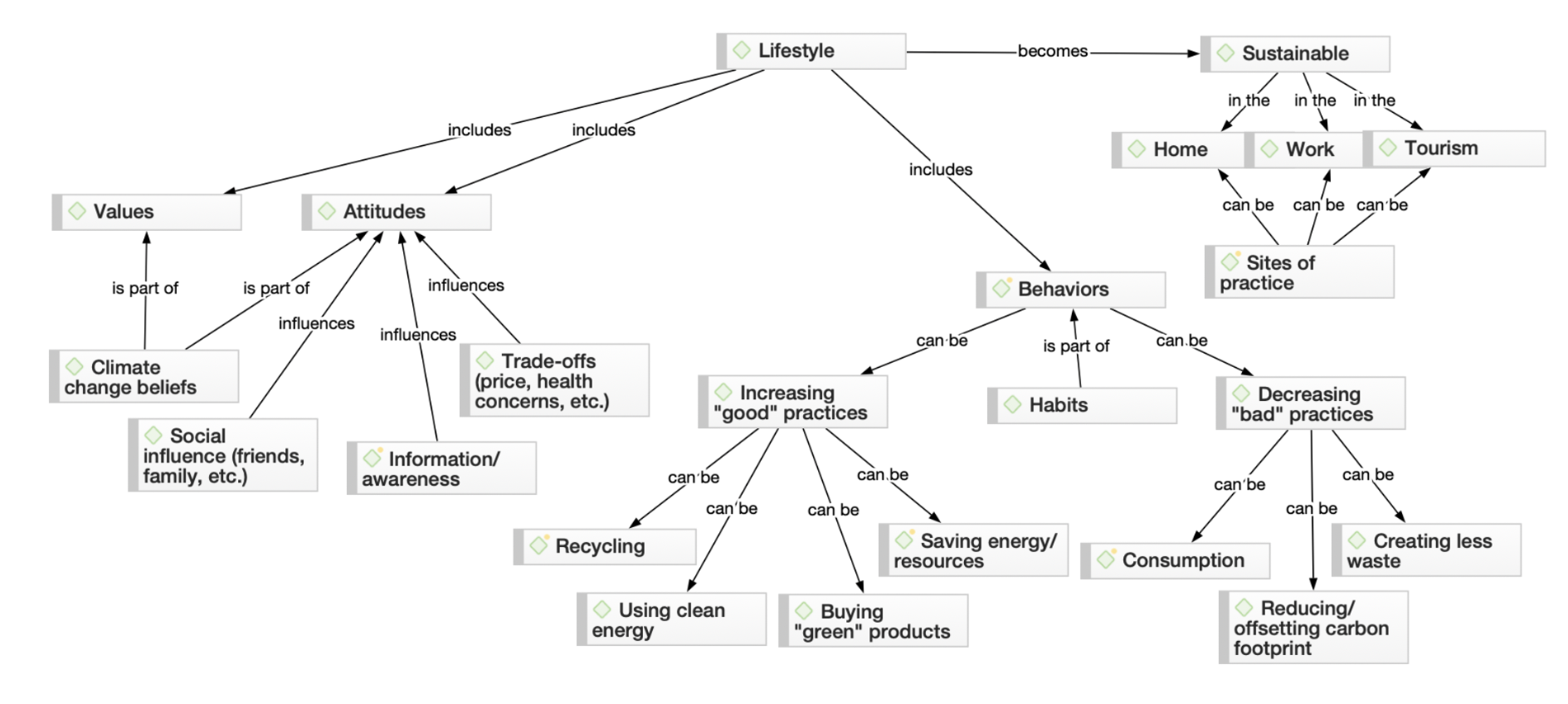
Qualitative data analysis is an important part of research and building greater understanding across fields for a number of reasons. First, cases for qualitative data analysis can be selected purposefully according to whether they typify certain characteristics or contextual locations. In other words, qualitative data permits deep immersion into a topic, phenomenon, or area of interest. Rather than seeking generalizability to the population the sample of participants represent, qualitative research aims to construct an in-depth and nuanced understanding of the research topic.
Secondly, the role or position of the researcher in qualitative data analysis is given greater critical attention. This is because, in qualitative data analysis, the possibility of the researcher taking a ‘neutral' or transcendent position is seen as more problematic in practical and/or philosophical terms. Hence, qualitative researchers are often exhorted to reflect on their role in the research process and make this clear in the analysis.

Thirdly, while qualitative data analysis can take a wide variety of forms, it largely differs from quantitative research in the focus on language, signs, experiences, and meaning. In addition, qualitative approaches to analysis are often holistic and contextual rather than analyzing the data in a piecemeal fashion or removing the data from its context. Qualitative approaches thus allow researchers to explore inquiries from directions that could not be accessed with only numerical quantitative data.
Establishing research rigor
Systematic and transparent approaches to the analysis of qualitative data are essential for rigor . For example, many qualitative research methods require researchers to carefully code data and discern and document themes in a consistent and credible way.
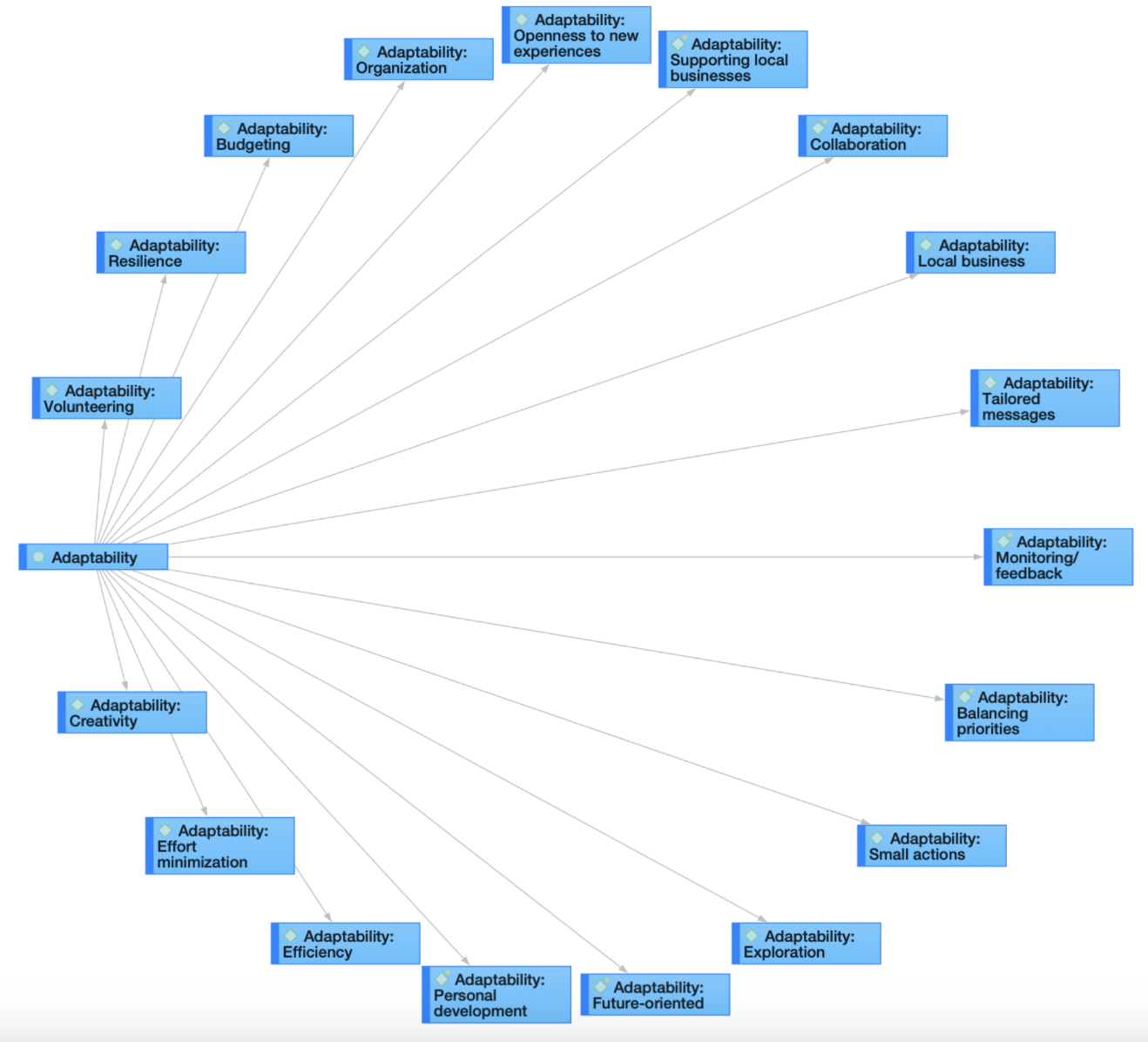
Perhaps the most traditional division in the way qualitative and quantitative research have been used in the social sciences is for qualitative methods to be used for exploratory purposes (e.g., to generate new theory or propositions) or to explain puzzling quantitative results, while quantitative methods are used to test hypotheses .

After you’ve collected relevant data , what is the best way to look at your data ? As always, it will depend on your research question . For instance, if you employed an observational research method to learn about a group’s shared practices, an ethnographic approach could be appropriate to explain the various dimensions of culture. If you collected textual data to understand how people talk about something, then a discourse analysis approach might help you generate key insights about language and communication.

The qualitative data coding process involves iterative categorization and recategorization, ensuring the evolution of the analysis to best represent the data. The procedure typically concludes with the interpretation of patterns and trends identified through the coding process.
To start off, let’s look at two broad approaches to data analysis.
Deductive analysis
Deductive analysis is guided by pre-existing theories or ideas. It starts with a theoretical framework , which is then used to code the data. The researcher can thus use this theoretical framework to interpret their data and answer their research question .
The key steps include coding the data based on the predetermined concepts or categories and using the theory to guide the interpretation of patterns among the codings. Deductive analysis is particularly useful when researchers aim to verify or extend an existing theory within a new context.
Inductive analysis
Inductive analysis involves the generation of new theories or ideas based on the data. The process starts without any preconceived theories or codes, and patterns, themes, and categories emerge out of the data.

The researcher codes the data to capture any concepts or patterns that seem interesting or important to the research question . These codes are then compared and linked, leading to the formation of broader categories or themes. The main goal of inductive analysis is to allow the data to 'speak for itself' rather than imposing pre-existing expectations or ideas onto the data.
Deductive and inductive approaches can be seen as sitting on opposite poles, and all research falls somewhere within that spectrum. Most often, qualitative data analysis approaches blend both deductive and inductive elements to contribute to the existing conversation around a topic while remaining open to potential unexpected findings. To help you make informed decisions about which qualitative data analysis approach fits with your research objectives, let's look at some of the common approaches for qualitative data analysis.
Content analysis is a research method used to identify patterns and themes within qualitative data. This approach involves systematically coding and categorizing specific aspects of the content in the data to uncover trends and patterns. An often important part of content analysis is quantifying frequencies and patterns of words or characteristics present in the data .
It is a highly flexible technique that can be adapted to various data types , including text, images, and audiovisual content . While content analysis can be exploratory in nature, it is also common to use pre-established theories and follow a more deductive approach to categorizing and quantifying the qualitative data.
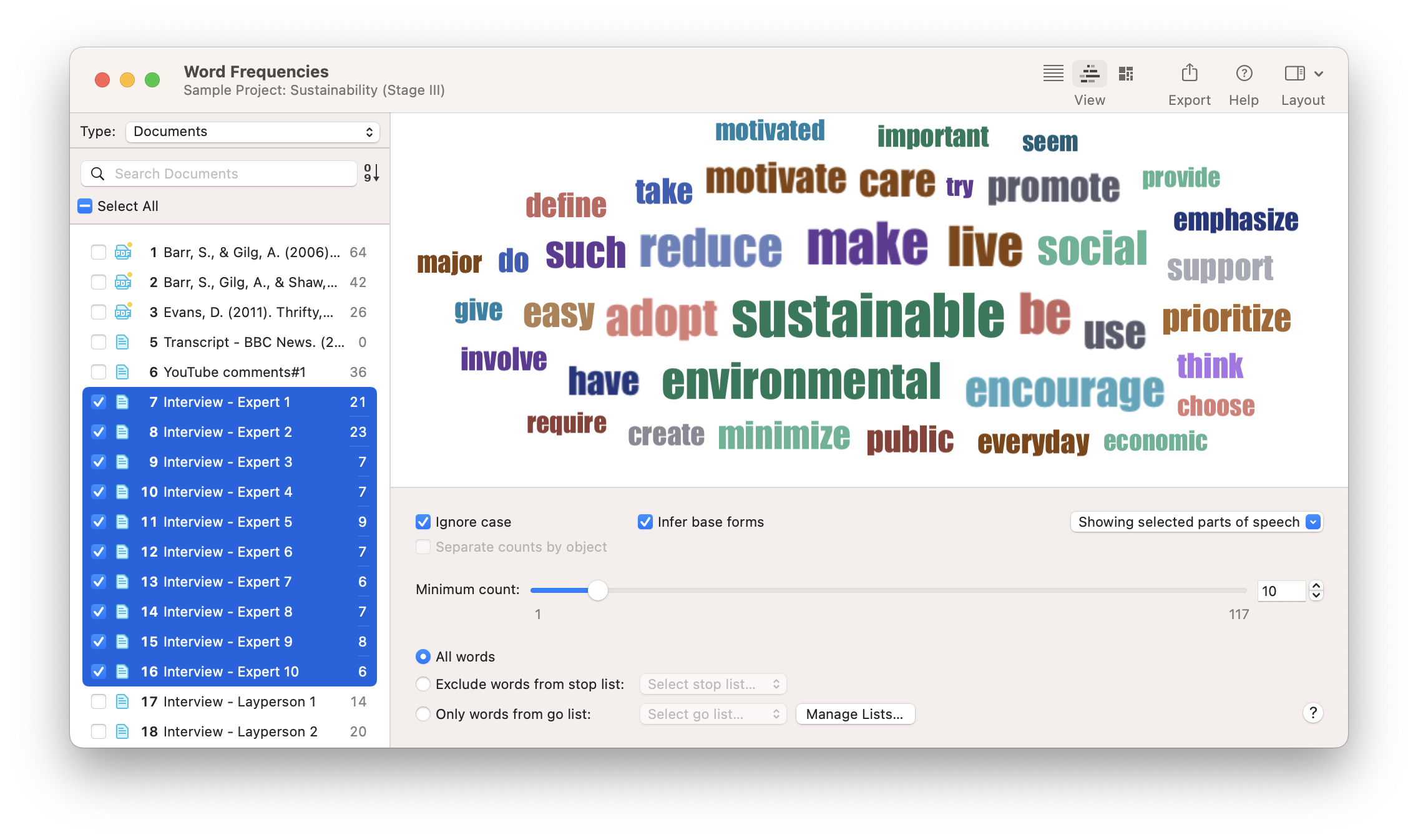
Thematic analysis is a method used to identify, analyze, and report patterns or themes within the data. This approach moves beyond counting explicit words or phrases and focuses on also identifying implicit concepts and themes within the data.

Researchers conduct detailed coding of the data to ascertain repeated themes or patterns of meaning. Codes can be categorized into themes, and the researcher can analyze how the themes relate to one another. Thematic analysis is flexible in terms of the research framework, allowing for both inductive (data-driven) and deductive (theory-driven) approaches. The outcome is a rich, detailed, and complex account of the data.
Grounded theory is a systematic qualitative research methodology that is used to inductively generate theory that is 'grounded' in the data itself. Analysis takes place simultaneously with data collection , and researchers iterate between data collection and analysis until a comprehensive theory is developed.
Grounded theory is characterized by simultaneous data collection and analysis, the development of theoretical codes from the data, purposeful sampling of participants, and the constant comparison of data with emerging categories and concepts. The ultimate goal is to create a theoretical explanation that fits the data and answers the research question .
Discourse analysis is a qualitative research approach that emphasizes the role of language in social contexts. It involves examining communication and language use beyond the level of the sentence, considering larger units of language such as texts or conversations.

Discourse analysts typically investigate how social meanings and understandings are constructed in different contexts, emphasizing the connection between language and power. It can be applied to texts of all kinds, including interviews , documents, case studies , and social media posts.
Phenomenological research focuses on exploring how human beings make sense of an experience and examines the essence of this experience. It strives to understand people's perceptions, perspectives, and understandings of a particular situation or phenomenon.

It involves in-depth engagement with participants, often through interviews or conversations, to explore their lived experiences. The goal is to derive detailed descriptions of the essence of the experience and to interpret what insights or implications this may bear on our understanding of this phenomenon.

Whatever your data analysis approach, start with ATLAS.ti
Qualitative data analysis done quickly and intuitively with ATLAS.ti. Download a free trial today.
Now that we've summarized the major approaches to data analysis, let's look at the broader process of research and data analysis. Suppose you need to do some research to find answers to any kind of research question, be it an academic inquiry, business problem, or policy decision. In that case, you need to collect some data. There are many methods of collecting data: you can collect primary data yourself by conducting interviews, focus groups , or a survey , for instance. Another option is to use secondary data sources. These are data previously collected for other projects, historical records, reports, statistics – basically everything that exists already and can be relevant to your research.

The data you collect should always be a good fit for your research question . For example, if you are interested in how many people in your target population like your brand compared to others, it is no use to conduct interviews or a few focus groups . The sample will be too small to get a representative picture of the population. If your questions are about "how many….", "what is the spread…" etc., you need to conduct quantitative research . If you are interested in why people like different brands, their motives, and their experiences, then conducting qualitative research can provide you with the answers you are looking for.
Let's describe the important steps involved in conducting research.
Step 1: Planning the research
As the saying goes: "Garbage in, garbage out." Suppose you find out after you have collected data that
- you talked to the wrong people
- asked the wrong questions
- a couple of focus groups sessions would have yielded better results because of the group interaction, or
- a survey including a few open-ended questions sent to a larger group of people would have been sufficient and required less effort.
Think thoroughly about sampling, the questions you will be asking, and in which form. If you conduct a focus group or an interview, you are the research instrument, and your data collection will only be as good as you are. If you have never done it before, seek some training and practice. If you have other people do it, make sure they have the skills.
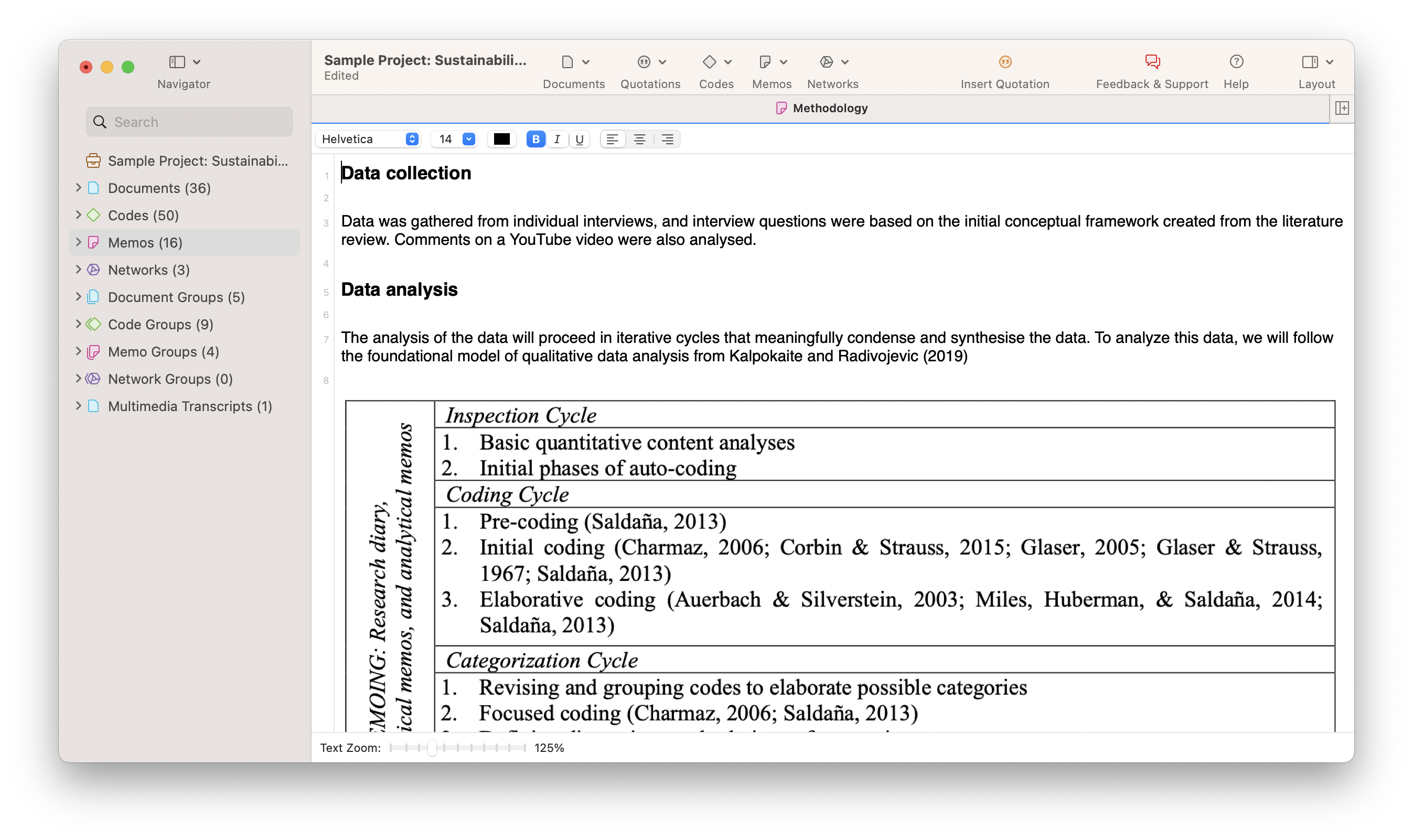
Step 2: Preparing the data
When you conduct focus groups or interviews, think about how to transcribe them. Do you want to run them online or offline? If online, check out which tools can serve your needs, both in terms of functionality and cost. For any audio or video recordings , you can consider using automatic transcription software or services. Automatically generated transcripts can save you time and money, but they still need to be checked. If you don't do this yourself, make sure that you instruct the person doing it on how to prepare the data.
- How should the final transcript be formatted for later analysis?
- Which names and locations should be anonymized?
- What kind of speaker IDs to use?
What about survey data ? Some survey data programs will immediately provide basic descriptive-level analysis of the responses. ATLAS.ti will support you with the analysis of the open-ended questions. For this, you need to export your data as an Excel file. ATLAS.ti's survey import wizard will guide you through the process.
Other kinds of data such as images, videos, audio recordings, text, and more can be imported to ATLAS.ti. You can organize all your data into groups and write comments on each source of data to maintain a systematic organization and documentation of your data.

Step 3: Exploratory data analysis
You can run a few simple exploratory analyses to get to know your data. For instance, you can create a word list or word cloud of all your text data or compare and contrast the words in different documents. You can also let ATLAS.ti find relevant concepts for you. There are many tools available that can automatically code your text data, so you can also use these codings to explore your data and refine your coding.
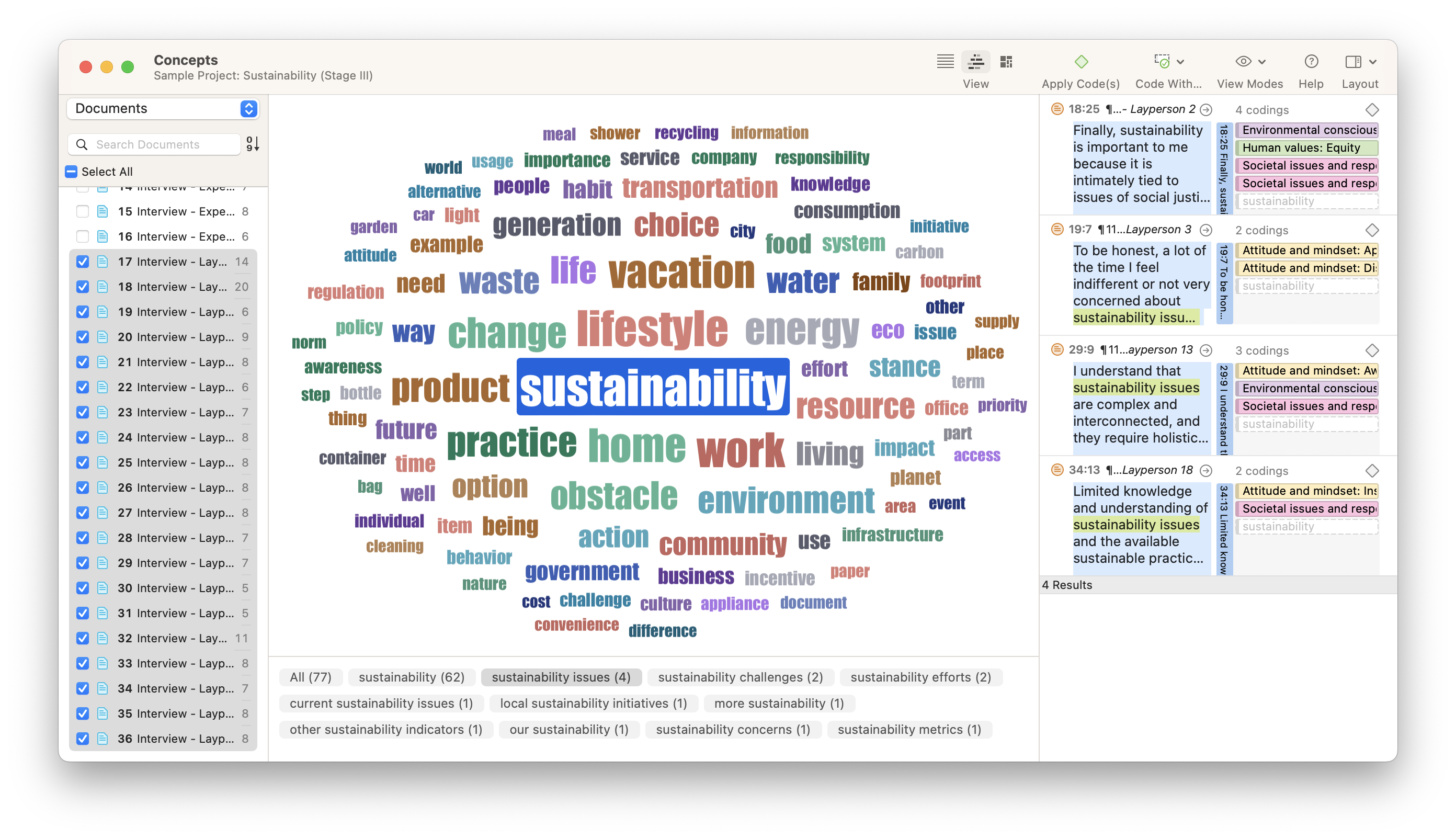
For instance, you can get a feeling for the sentiments expressed in the data. Who is more optimistic, pessimistic, or neutral in their responses? ATLAS.ti can auto-code the positive, negative, and neutral sentiments in your data. Naturally, you can also simply browse through your data and highlight relevant segments that catch your attention or attach codes to begin condensing the data.
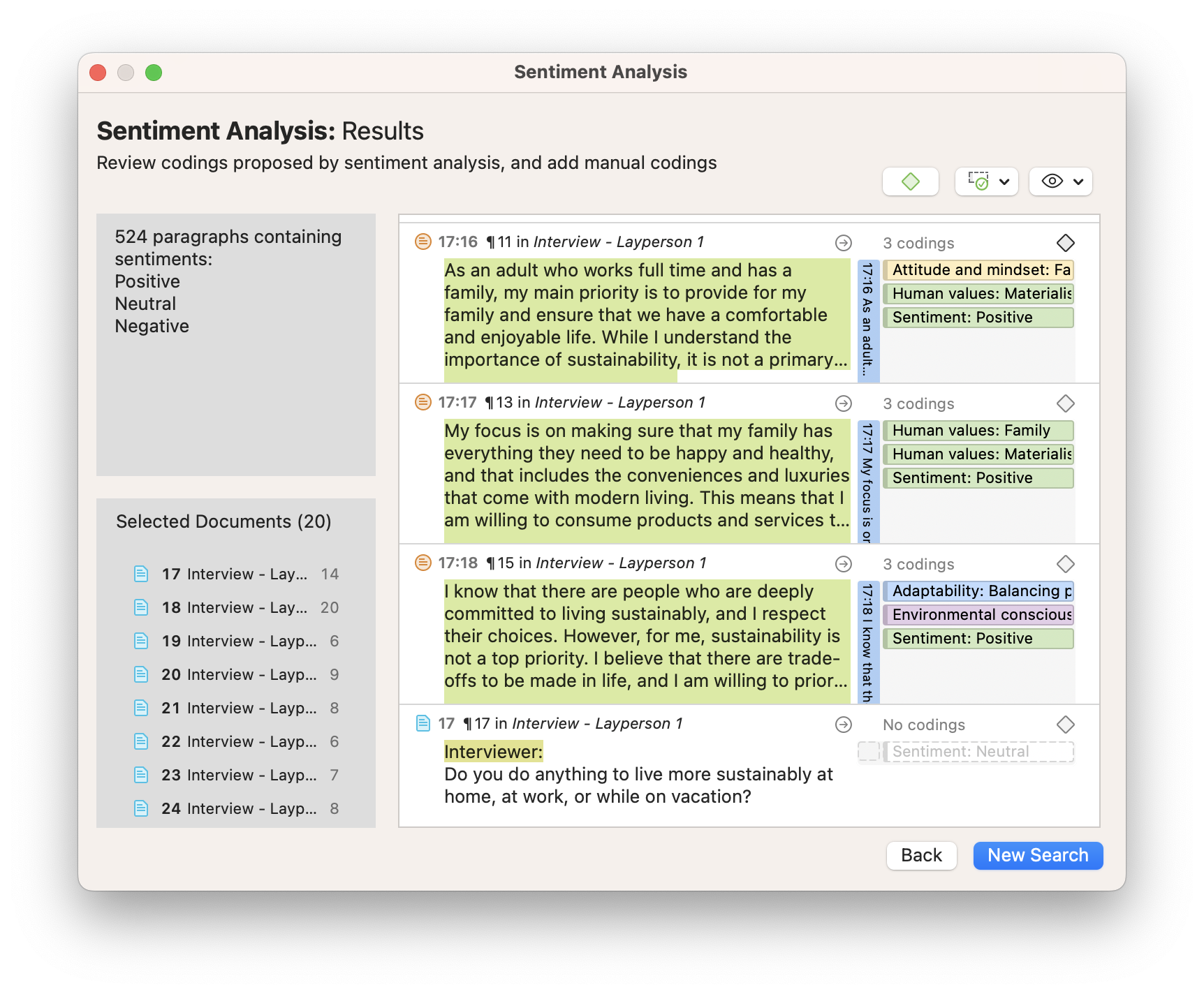
Step 4: Build a code system
Whether you start with auto-coding or manual coding, after having generated some first codes, you need to get some order in your code system to develop a cohesive understanding. You can build your code system by sorting codes into groups and creating categories and subcodes. As this process requires reading and re-reading your data, you will become very familiar with your data. Counting on a tool like ATLAS.ti qualitative data analysis software will support you in the process and make it easier to review your data, modify codings if necessary, change code labels, and write operational definitions to explain what each code means.
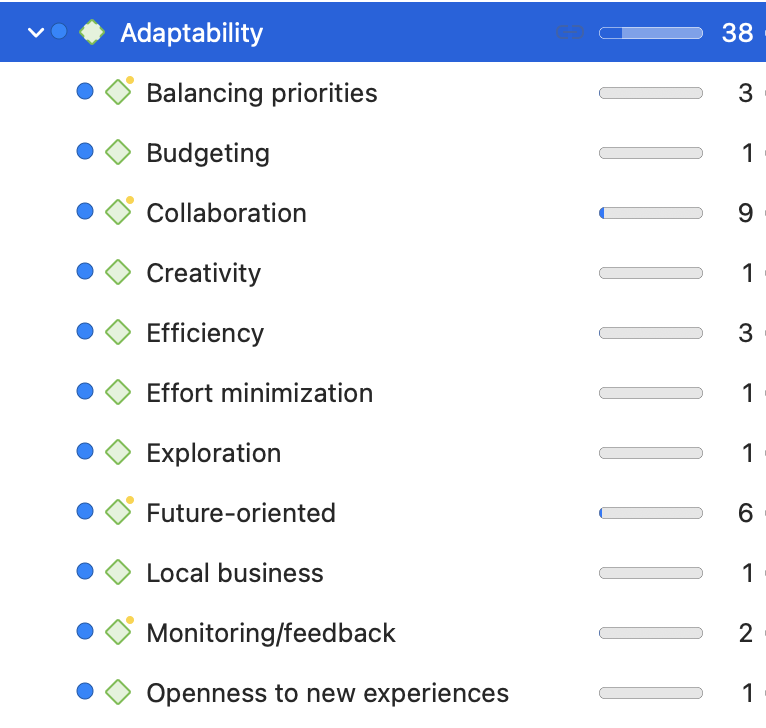
Step 5: Query your coded data and write up the analysis
Once you have coded your data, it is time to take the analysis a step further. When using software for qualitative data analysis , it is easy to compare and contrast subsets in your data, such as groups of participants or sets of themes.
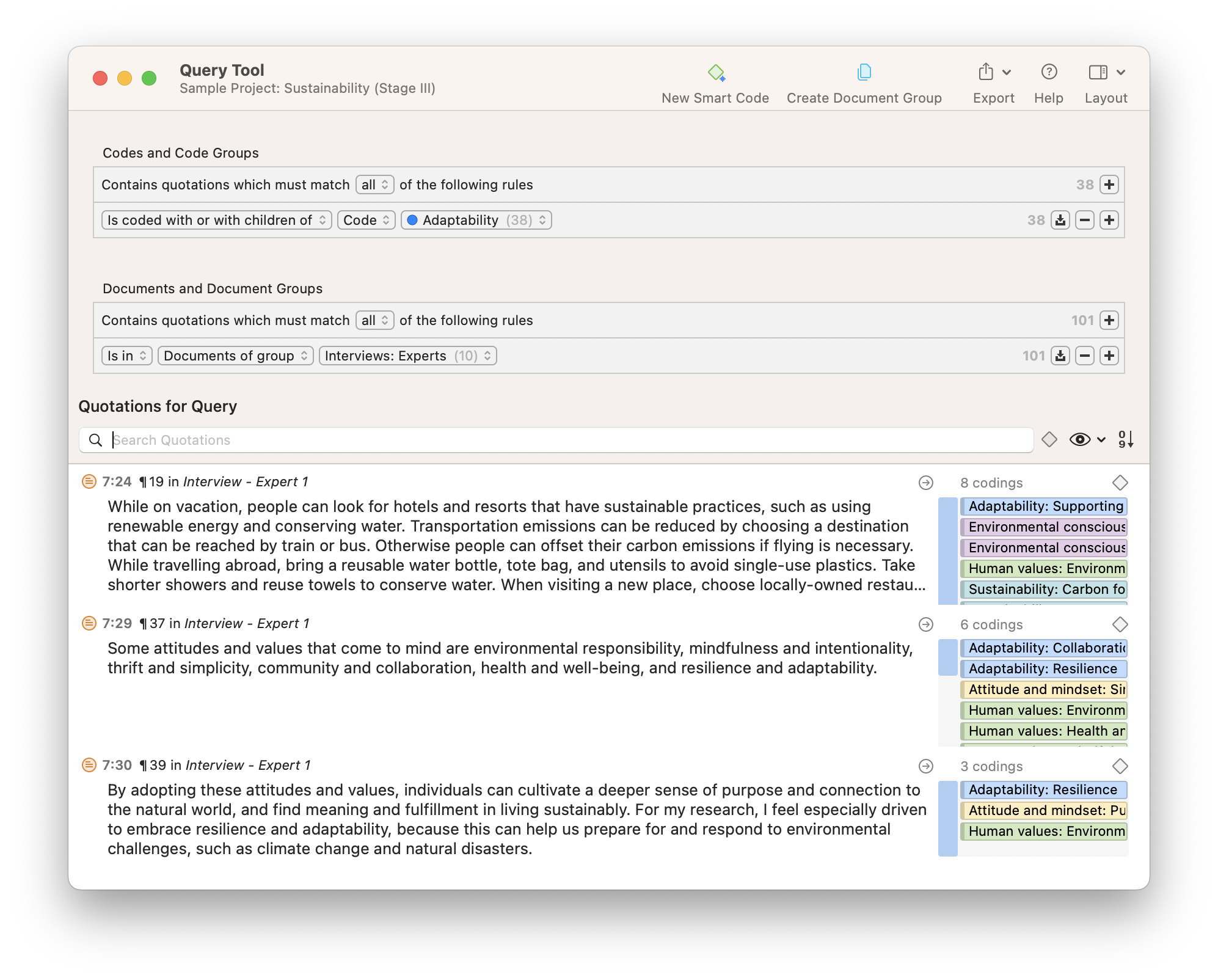
For instance, you can query the various opinions of female vs. male respondents. Is there a difference between consumers from rural or urban areas or among different age groups or educational levels? Which codes occur together throughout the data set? Are there relationships between various concepts, and if so, why?
Step 6: Data visualization
Data visualization brings your data to life. It is a powerful way of seeing patterns and relationships in your data. For instance, diagrams allow you to see how your codes are distributed across documents or specific subpopulations in your data.
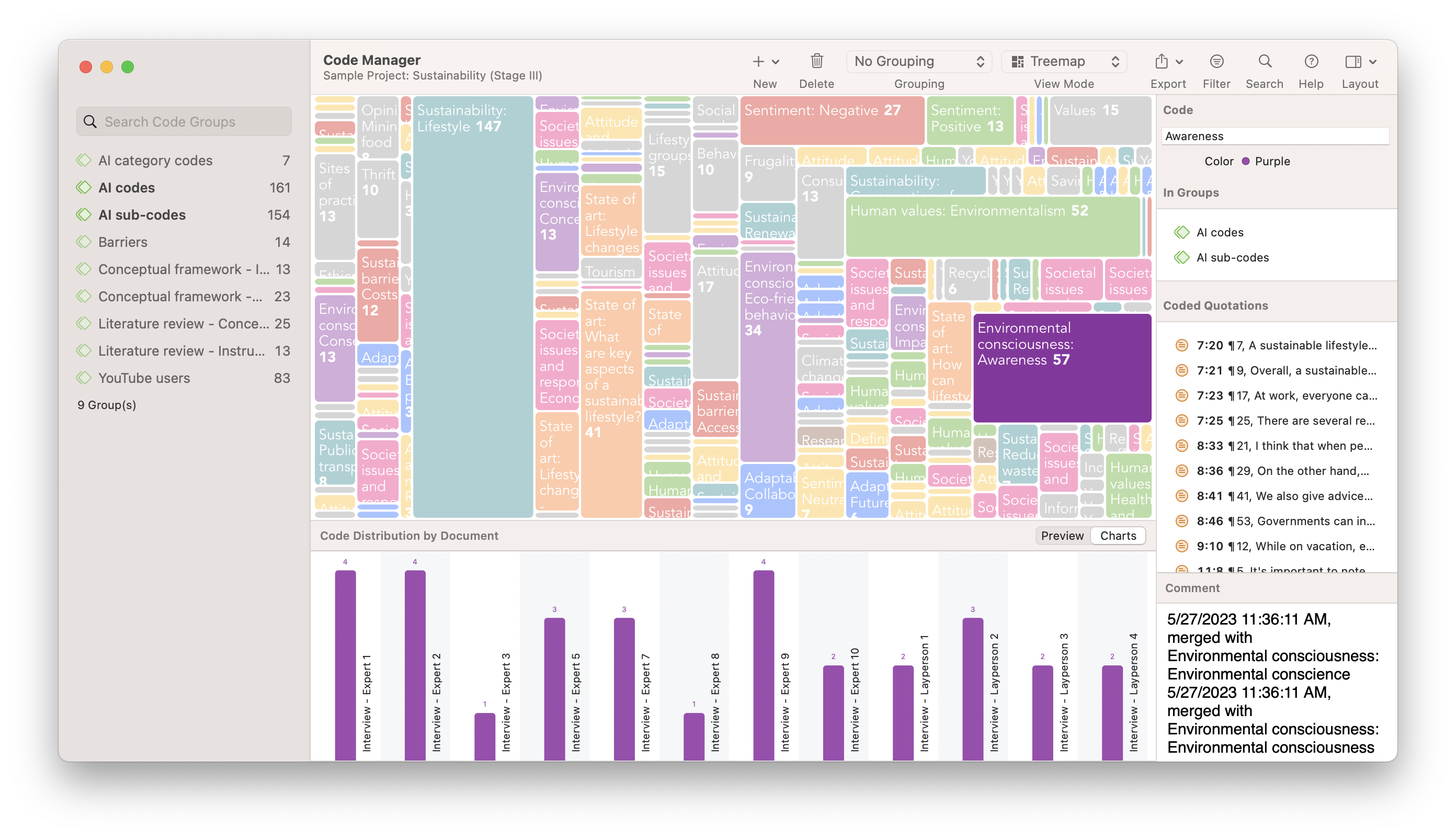
Exploring coded data on a canvas, moving around code labels in a virtual space, linking codes and other elements of your data set, and thinking about how they are related and why – all of these will advance your analysis and spur further insights. Visuals are also great for communicating results to others.
Step 7: Data presentation
The final step is to summarize the analysis in a written report . You can now put together the memos you have written about the various topics, select some salient quotes that illustrate your writing, and add visuals such as tables and diagrams. If you follow the steps above, you will already have all the building blocks, and you just have to put them together in a report or presentation.
When preparing a report or a presentation, keep your audience in mind. Does your audience better understand numbers than long sections of detailed interpretations? If so, add more tables, charts, and short supportive data quotes to your report or presentation. If your audience loves a good interpretation, add your full-length memos and walk your audience through your conceptual networks and illustrative data quotes.
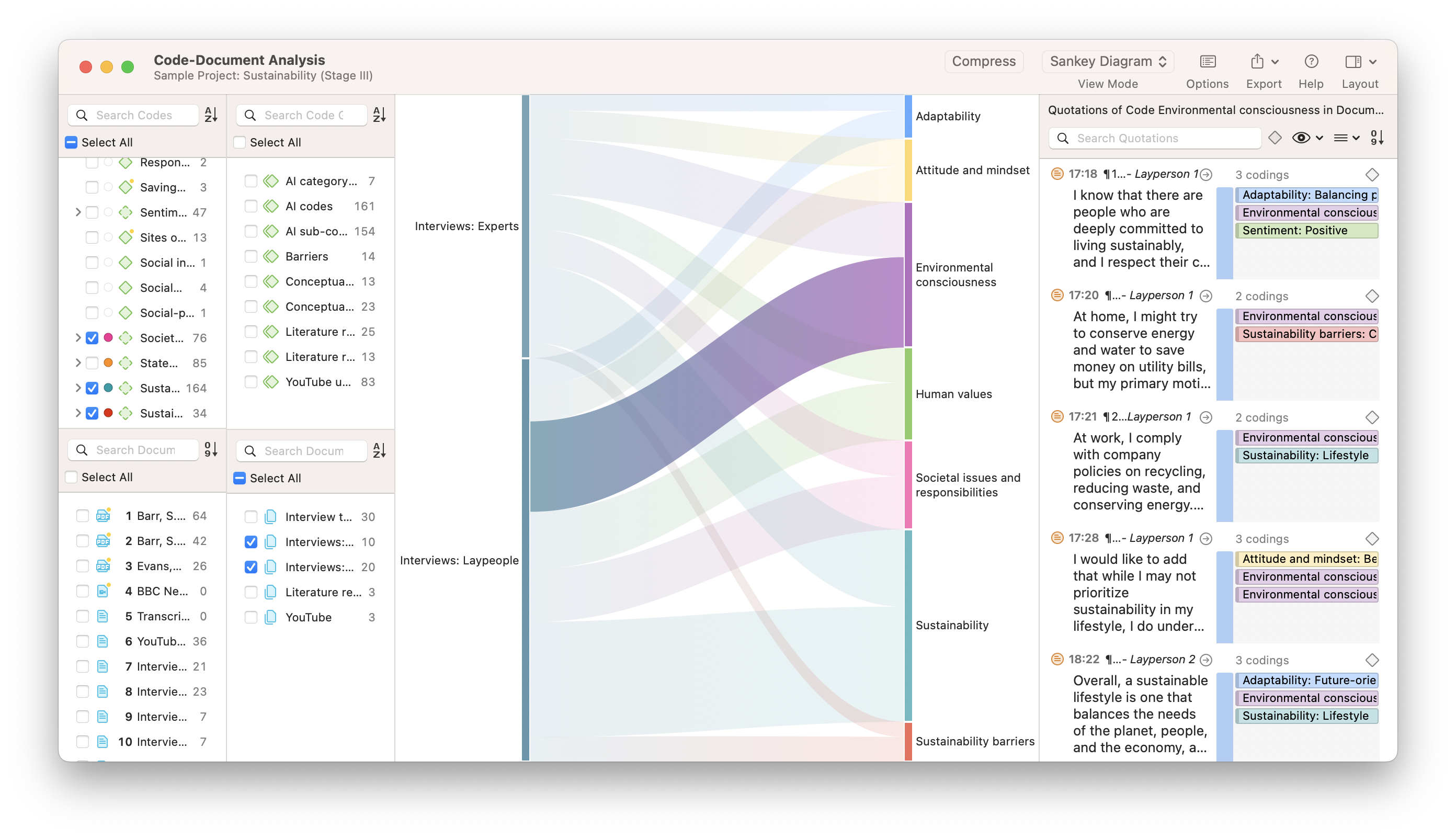
Qualitative data analysis begins with ATLAS.ti
For tools that can make the most out of your data, check out ATLAS.ti with a free trial.
Home › Blog › Mastering Qualitative Data Analysis: Key Techniques Explained
Mastering Qualitative Data Analysis: Key Techniques Explained
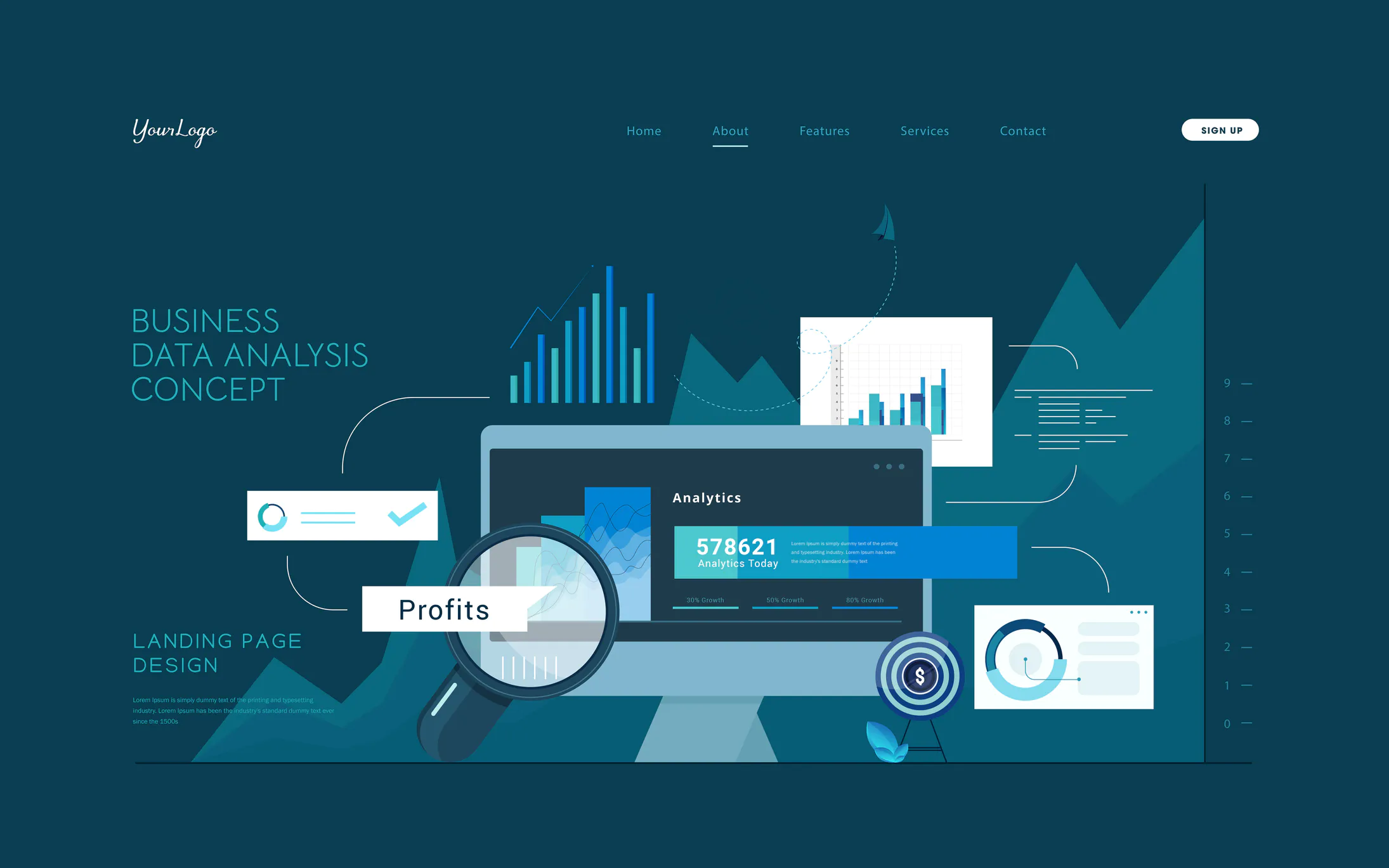
Table of Contents
Qualitative data analysis (QDA) is a critical part of research that involves interpreting non-numerical data, such as text, audio, video, and images. By understanding the intricate details of human behavior, attitudes, experiences, and perceptions, qualitative data analysis helps to draw deep insights that cannot be captured by quantitative methods alone. This blog delves into the key methods, techniques, and tools used in qualitative analysis, while also highlighting the challenges and advantages of working with qualitative data.
Book a demo to experience the meaningful insights we derive from data through our analytical tools and platform capabilities. Schedule a demo today!

What is Qualitative Data Analysis?
Qualitative data analysis refers to the process of examining, interpreting, and making sense of non-numerical data. Unlike quantitative analysis, which deals with numbers and statistics, qualitative analysis focuses on understanding the meaning behind words, actions, and interactions. This type of analysis is often used in fields such as sociology, psychology, marketing, and anthropology to explore human experiences and behaviors.
Methods of Qualitative Data Analysis
There are several qualitative data analysis methods that researchers can choose from, depending on their research objectives and the nature of the data. Below are some of the most widely used qualitative analysis techniques :
1. Thematic Analysis Method
Thematic analysis is one of the most popular and flexible techniques for analyzing qualitative data. It involves identifying, analyzing, and reporting patterns (themes) within the data. Themes are typically derived from the data itself, providing a rich understanding of key topics, issues, and concepts.
- Familiarization with data
- Generating initial codes
- Searching for themes
- Reviewing themes
- Defining and naming themes
- Writing the report
2. Grounded Theory Analysis
Grounded theory analysis aims to develop theories grounded in the data itself, rather than testing an existing theory. This method is particularly useful for understanding processes, interactions, or phenomena where no prior theoretical framework exists.
- Constant comparative method
- Data coding and memoing
- Theory development
3. Narrative Analysis
Narrative analysis involves analyzing stories or personal accounts. Researchers use this method to understand how individuals construct meaning and identity through their narratives, often focusing on the sequence of events and their context.
- Understanding personal experiences
- Exploring cultural narratives
- Studying storytelling in communication
4. Content Analysis in Qualitative Research
Content analysis involves systematically categorizing and analyzing textual or visual content. This method is used to identify patterns, themes, or biases in qualitative data such as interviews, articles, or social media posts.
- Categorization of data
- Identifying frequency of themes
- Examining the meaning of content
5. Discourse Analysis Method
Discourse analysis focuses on studying language use in its social context. It looks at how language constructs meaning, influences behavior, and reflects power dynamics in society.
- Language structure
- Context of communication
- Power relationships in discourse
6. Framework Analysis
Framework analysis is a method that uses a systematic process to manage and analyze qualitative data. It is often used in policy research and helps organize data according to key themes, making it easier to compare and contrast information.
- Familiarization with the data
- Identifying key themes
- Charting data according to the framework
7. Phenomenological Analysis
Phenomenological analysis aims to understand how individuals experience a particular phenomenon. Researchers use this method to explore how people perceive and make sense of their lived experiences.
- Focus on personal experiences
- In-depth interviews
- Emphasis on descriptive data
Types of Qualitative Research Methods
Qualitative research encompasses a range of methods that allow researchers to collect rich, detailed data. These methods are primarily focused on collecting data in a naturalistic setting and understanding the meanings behind individuals’ experiences.
- Ethnography : Involves the researcher immersing themselves in a particular culture or group to observe and interpret behaviors and interactions.
- Case Studies : Detailed examinations of specific instances or examples within a real-life context.
- Interviews : Structured, semi-structured, or unstructured conversations between the researcher and participants to gather insights.
Coding in Qualitative Data Analysis
One of the most fundamental techniques in qualitative data analysis is coding . Coding refers to the process of labeling and categorizing data segments that represent specific themes or concepts. Codes can be words, phrases, or symbols that capture the essence of the data.
- Initial coding: Identifying segments of data that represent significant concepts.
- Focused coding: Grouping similar codes to identify emerging themes.
- Axial coding: Developing connections between categories and subcategories.
Qualitative Data Interpretation
Once data has been coded, the next step is qualitative data interpretation , where the researcher begins to make sense of the data by examining patterns, relationships, and themes. This stage requires critical thinking and a deep understanding of the research context.
- Research questions
- Theoretical framework
- Data triangulation (using multiple data sources)
Advantages of Qualitative Data Analysis
Qualitative analysis offers numerous benefits, particularly in its ability to provide a deeper, more nuanced understanding of complex phenomena.
- Rich Insights : Qualitative methods allow for the exploration of emotions, motivations, and personal experiences.
- Flexibility : It is adaptable to various research designs and can be used across different disciplines.
- Contextual Understanding : Helps researchers interpret data in the context of real-world environments, providing richer insights.
Challenges in Analyzing Qualitative Data
Despite its advantages, analyzing qualitative data comes with its own set of challenges:
- Subjectivity : The analysis is heavily influenced by the researcher’s interpretation, which can lead to biases.
- Complexity : The large volume of unstructured data can be overwhelming and time-consuming to analyze.
- Limited Generalizability : Since qualitative research focuses on specific cases, it may not always be generalizable to larger populations.
Qualitative vs Quantitative Analysis
While both qualitative vs quantitative analysis are essential in research, they differ significantly in approach and purpose:
Semi-Structured Interview Analysis
Semi-structured interviews are a common method in qualitative research, where the researcher follows a flexible interview guide while allowing space for unplanned questions and exploration. Semi-structured interview analysis involves reviewing responses to identify themes and patterns within the interview data.
Quantzig Services: Advanced Qualitative Data Analysis Solutions
At Quantzig , we specialize in helping businesses make sense of large volumes of qualitative data through advanced analysis techniques. Our services encompass:
- Custom Data Analysis Solutions : Tailored strategies to address specific business challenges.
- Thematic and Content Analysis : Extracting key themes and insights from customer feedback, surveys, and reviews.
- Qualitative Research Methodology Expertise : Offering expert guidance on conducting interviews, focus groups, and ethnographic studies.
- Data Interpretation and Reporting : Providing clear, actionable insights that drive business decisions.
Mastering qualitative data analysis is an essential skill for researchers and professionals seeking to understand the deeper meanings behind human behavior and experiences. By utilizing the various qualitative analysis techniques and understanding their applications, researchers can produce more insightful, meaningful results. While qualitative analysis can be challenging, with the right tools and methodologies, it offers unparalleled richness in understanding complex issues that quantitative data simply cannot capture.
Get started with your complimentary trial today and delve into our platform without any obligations. Explore our wide range of customized, consumption driven analytical solutions services built across the analytical maturity levels.
Topic Tags:
Related case study, data-driven retail merchandise planning solutions, related articles, healthcare marketing mix modeling: driving growth for a pharmaceutical giant, big data in oil and gas: unlocking insights for success.
- Optimizing Marketing Mix for Enhanced ROI in Electronics Retail
Recent Posts

The client needed to understand why their existing merchandising strategies weren't translating to online success. Were ...

The client also wanted to assess the effectiveness of their digital and social media marketing efforts. They sought to l...

The client sought to implement a digital platform to analyze and manage its oil and gas operations, utilizing advanced a...
Privacy Overview
- Generative AI
- Live Research
- Auto-Moderated Research
- Previously Recorded Research
- Security and Data Privacy
- Professional Services
- Global Recruitment
- Do It Together
- Do It Yourself
- Consumer Insights
- Product / R&D
- Brand and Marketing
- Global Consumer Centricity
- Agile Concept & Product Development
- Shopper Insights
- Message and Package Testing
- Customer Stories
- Support Resources
- Partner Ecosystem
Featured Content

Unlocking A New Era of Qualitative Research with Generative AI

Apathy to Empathy : The 3 Steps to Design for Human Centricity at Scale

Discuss’ Winter Release Brings ‘Never Before Seen’ Innovation That Will Reshape Market Insights For Global Organizations
Uncategorized
Top Techniques for Effective Qualitative Data Analysis: Tools and Methods

Struggling to make sense of endless interview transcripts or piles of survey responses? You’re not alone. Many researchers find themselves bogged down, spending hours sifting through non-numeric data without clear results. Understanding top techniques for effective qualitative data analysis isn’t just beneficial; it’s essential for revealing hidden patterns and insights crucial to your work. Facing a mountain of raw data can be daunting, but innovative methods like content analysis and narrative analysis offer structured paths through the chaos. These approaches, made easier by advanced tools specifically designed for qualitative research, help transform overwhelming amounts of information into meaningful conclusions. Dive into our detailed guide to discover how you can harness these powerful techniques to elevate your research projects efficiently and effectively.
The top techniques for effective qualitative data analysis include Content Analysis, which identifies themes and patterns in various content types; Thematic Analysis, which focuses on recurring themes within qualitative datasets; and Grounded Theory Analysis, which formulates theories based on real-world data. Utilizing these techniques can significantly enhance your ability to derive meaningful insights that inform decision-making processes.
Top Techniques for Qualitative Data Analysis
Content analysis.
Content analysis is a foundational technique in qualitative research, where researchers systematically evaluate text, audio, or video content to uncover recurring themes or patterns. At its core, this method quantifies specific words, phrases, or concepts across various data sources to reveal important insights.
For instance, by analyzing customer feedback using content analysis, you might discover phrases such as “poor customer service” that signal underlying issues requiring immediate action. This kind of clarity is critical to enhancing services and addressing customer concerns effectively.
Narrative Analysis
Narrative analysis takes qualitative research a step further by examining how stories are told and constructed. This method involves analyzing interviews, testimonials, and personal accounts to extract deeper meaning from the narratives being shared. It allows researchers to appreciate both the content and context of a story, providing nuanced insights that surface through the subject’s words and experiences.
For example, in a healthcare setting, analyzing patient narratives can help identify critical moments in their medical journeys that highlight systemic shortcomings or gaps in care.
Understanding these methods—content analysis and narrative analysis—positions you to tackle qualitative data with confidence and clarity.
With these foundations established, we can now explore a specific analytical approach rooted in real-world data for developing theories.
Grounded Theory Explained
Grounded theory is particularly compelling because it shifts the focus from merely verifying established hypotheses to discovering new insights rooted in real-world data. This approach is especially valuable when exploring complex social phenomena where existing theories may fall short or fail to capture nuances. Instead of culled assumptions, grounded theory cultivates understanding directly from participant experiences and observational data, enhancing its relevance and application.
Key Steps in Grounded Theory
The grounded theory process begins with data collection that is free from preconceived notions. This means conducting qualitative interviews, observations, or gathering documents without any framework influencing what you’re looking for. This openness allows researchers to be receptive to unexpected themes that arise during the research process.
As the initial phase concludes, we shift into the pivotal step known as open coding.
Open coding involves breaking down the data into distinct concepts. Each piece of data is closely examined to identify significant events or patterns that researchers can later analyze. This stage is iterative; it may require revisiting previous data to ensure no aspect is overlooked. By assigning labels to various elements, such as emotional responses or common challenges faced by participants, researchers begin forming an initial understanding of their data’s landscape.
With open coding complete, the next logical step is axial coding.
Axial coding takes this further by connecting identified concepts into relevant categories. In this stage, researchers actively look for relationships among the concepts emerged during open coding. For example, if multiple respondents mention “poor communication” as a reason for their job dissatisfaction, this concept can be categorized under a broader theme of workplace environment. By organizing these categories and analyzing how they relate or influence each other, researchers refine their initial findings into more manageable sections.
Once axial coding has synthesized the information, we arrive at the final step: selective coding.
Selective coding is the culmination of grounded theory analysis where researchers refine these categories into a cohesive explanation or theory. Here, you focus on identifying the core category that encapsulates the primary insight drawn from your research. For instance, in a study exploring why employees leave an organization, you might find that “lack of support” becomes central, drawing together issues of mentorship, mental health resources, and professional development mentioned earlier.
Introduction to Thematic Analysis
Thematic Analysis is both an approachable and powerful technique in qualitative data analysis, designed to identify recurring themes and patterns within the dataset. This method serves as a bridge between raw information and deeper insights, allowing researchers to grasp the underlying narratives that shape participant responses. Its effectiveness stems from the structured approach it provides, making it a popular choice among researchers across various disciplines.
At its core, the technique encompasses several key steps: familiarizing yourself with the data, generating initial codes based on significant chunks of information, searching for overarching themes, rigorously reviewing these themes for coherence, defining and naming them clearly, and ultimately compiling everything into a detailed report. Each phase is crucial, ensuring that no detail is overlooked while offering a comprehensive view of the research subject.
Important Phases in Thematic Analysis
To kick off this process, Phase 1 emphasizes Familiarization with Data. This involves thoroughly reading through all collected material—whether interviews, open-ended survey responses, or focus group conversations—repeatedly until you have a solid grasp of what the data conveys. The goal here is immersion: understanding context, tone, and subtleties that might initially be missed.
Moving on to Phase 2, Initial Codes are generated. This step transforms qualitative data into manageable pieces that can then be systematically analyzed. Codes can be identified manually or aided by software tools; they represent key points of interest or commonalities found across the dataset. This structured coding is essential for uncovering significant patterns that lead to thematic development.
By employing such systematic approaches, researchers can ensure comprehensive coverage while deriving reliable insights that boost the validity of their findings. As we turn our attention next, we’ll explore techniques that enhance coding and categorization methods crucial for building robust qualitative research frameworks.
Essential Methods for Coding and Categorization
At its core, coding and categorization breathe life into qualitative data analysis; it’s how we transform raw information into meaningful insights. Think of it as piecing together a puzzle—each code or category contributes to creating a complete picture. The initial step in this journey is open coding. This approach involves breaking down the data into discrete parts, labeling those segments with codes that symbolize any emerging themes or concepts. It’s like tossing a wide net to capture everything, allowing for a comprehensive view of what might be hidden within the text.
Once this foundational work is established, the next stage builds upon these findings.
Enter axial coding, which offers an analytical lens on the data previously gathered. Here, researchers examine connections among the open codes. Imagine having scattered pieces of a map spread before you; axial coding helps in connecting these dots to see where they intersect and influence one another. This means looking for relationships—what codes might suggest about each other or how they can group together in broader categories. It’s during this phase that patterns emerge, allowing for a refined understanding of how different elements within the data work together.
However, the journey doesn’t end here; there’s still one crucial phase left.
Finally, we engage in selective coding, where all previous work culminates into an integrated narrative. This process involves identifying core categories that resonate throughout your earlier analyses and weaving them into overarching themes or theories. Here’s where clarity truly takes form—these themes articulate not just what was found but also give context and significance to those findings. Picture it as crafting a story from the more complex points of contact made earlier; selective coding ensures that each coded element supports and enriches the central narrative.
With these methods in mind, understanding their thoughtful application becomes paramount.
Each of these coding techniques works hand-in-hand, much like instruments in an orchestra harmonizing to create beautiful music from disparate notes. By mastering open coding, followed by axial and then selective coding, researchers can unlock profound layers of meaning within datasets. This seamless integration leads to more impactful qualitative research outcomes, enriching not only our understanding but also providing actionable insights that drive change.
Now that we’ve explored the essential techniques for transforming qualitative data into actionable insights, it’s time to focus on interpreting the results effectively to ensure clarity and relevance in our findings.
Interpreting Qualitative Data
Interpreting qualitative data is a nuanced process that goes far beyond simply organizing responses. It requires understanding the underlying meanings within the data you’ve gathered. To achieve this, you’ll need to identify patterns or recurring themes that emerge, which can often speak volumes about your research questions. It’s like piecing together a puzzle; each piece provides context and contributes to the overall picture.
At its core, interpretation involves acknowledging connections among the coded data and understanding how these link back to the broader context of your study. This can mean recognizing how individual experiences reflect larger societal trends or discovering how specific factors influence particular outcomes. Think of it as detective work; you gather clues—your coded responses—and then figure out what they signify in relation to your research objectives.
Take, for instance, a research project focused on student engagement in classrooms. If you uncover a prominent theme of “peer support,” this could lead to fascinating revelations about how these interactions enhance student participation and satisfaction. It may reveal not just that peer interactions matter, but also highlight specific ways those interactions manifest—like group projects or informal study sessions—that positively impact engagement levels.
As you navigate through your interpretations, it’s essential to bolster your findings with direct quotes from participants’ responses. This practice not only strengthens the credibility of your conclusions but also enhances reliability by providing concrete examples from the data. By integrating quotes into your narrative, you allow the voices of your respondents to resonate throughout your analysis, giving life to your findings.
Navigating the complexities of qualitative interpretation enriches research efforts and aligns insights with initial inquiries, laying the groundwork for actionable recommendations that follow.
Practical Tips for Effective Analysis
Conducting effective qualitative analysis is not just about collecting data; it’s an art that combines structure and insight. One of the most essential aspects is staying organized. Imagine diving into a treasure chest of information, but without a map to guide you—it can quickly become overwhelming.
In conjunction with staying organized, it’s crucial to be systematic in your analysis. This means developing a clear set of rules for how you code and categorize your data. Take the time to define what key themes or categories will be relevant before you begin coding. By doing so, you establish a coherent system that not only makes analysis smoother but also enhances the reliability of your results. If you codify with intention, you’re less likely to lose sight of overarching trends as you sift through individual pieces of data.
A well-documented process not only clarifies your steps but also strengthens the trustworthiness of your findings.
This leads us nicely to maintaining an audit trail, which is critical for transparency and replicability in qualitative research. Think of it as keeping a diary of every step you take during your analysis journey—documenting decisions made, codes applied, and even thoughts that arise along the way. This practice doesn’t just keep you accountable; it also allows others who may review or replicate your work to clearly understand your thought process.
Engaging multiple coders can also enhance reliability. Imagine working on a piece of art alone versus having several artists collaborate—the end result is often richer due to diverse perspectives. By employing multiple coders and conducting inter-coder reliability checks, you ensure that your analytical framework stands up against different interpretations and reduces biases that any single coder might bring.
Lastly, it’s important to reflect and revise throughout the process. After all, analysis is iterative rather than linear. As new themes emerge or existing categories evolve based on subsequent data interactions, don’t hesitate to revisit earlier codes and refine them. This ensures that your final analysis remains relevant and reflects the nuances within your data, ultimately leading to deeper insights and better-informed conclusions.
One researcher encapsulated these points by stating, “Using NVivo while adhering to systematic processes and regular reflection transformed my approach to data analysis—what once felt chaotic became manageable and insightful.”
By implementing these strategies, researchers are better prepared for the intricate task ahead, optimizing their analyses through precision and collaboration while gearing up for exploration into various tools designed specifically for this purpose.
Utilizing Software Tools for Analysis
The landscape of qualitative data analysis has radically transformed with the advent of specialized software. Traditional methods often limit researchers to tedious manual sorting and categorization, but with modern tools, analyzing complex data sets becomes a streamlined process.
However, it’s essential to appreciate how each tool is tailored for specific tasks. NVivo stands out for its advanced cross-analysis features, making it suitable for academic researchers dealing with extensive datasets. The choice of software can significantly influence the outcomes of your research process.
As teams combine their analytical needs with appropriate software capabilities, they can gain actionable insights that drive decision-making further than traditional analysis ever could.
In conclusion, utilizing tailored software tools is key to effective qualitative data analysis. To explore the best options available for your needs, get started today at Discuss .
Sign Up for our Newsletter
Related articles.

The “Discuss Employee Spotlight” is a Q&A series dedicated to showcasing all of the amazing talent at Discuss. For this…

Choosing the right analytical methods is essential to making headway with your data. Countless hours of reviewing academic papers and…

In today’s fast-paced world, wading through mountains of qualitative data can feel like searching for a needle in a haystack….
Sign Up for Our Monthly Newsletter
Curious practitioners as well as experts have been playing with various possibilities offered by GenAI-enabled analysis and reporting tools. At this roundtable, we cornered experts who provide a perspective on how, when and why to use GenAI to infuse fun, discovery and aha moments into the Qualitative Research experience.

Ushma Kapadia
All you ever wanted to know, about Qualitative Data Analysis, done both, the traditional and the AI-enabled way.
Nishi Singh & Ushma Kapadia
Learn how interactive transcription boosts accuracy, saves time, and enhances collaboration across industries with AI-powered tools and real-time editing.
Nishi Singh

Explore the art of incentive distribution to boost employee motivation and align with business goals. Learn about various incentive types, effective timing, and leveraging technology for streamlined management.

In the evolving content marketing landscape, AI content analysis transforms business strategies. Leveraging AI, companies gain insights into audience behaviors, optimize SEO, and boost engagement, building stronger connections with their target market.

Explore the transformative impact of AI on academic citations. Learn how AI tools enhance accuracy and efficiency, the challenges they present, and their future role in scholarly writing.

Explore how online qualitative research platforms, like Flowres, empower researchers to gain deeper insights into human behavior with advanced tools for interviews, focus groups, and data analysis.

“AI is going to save you time and money!” Intrigued by the loud claims of several AI platform developers, Dean Stephens, a Skeptical Optimist, decided to find out questions like: Can AI replace human beings? What good is AI for within qualitative research analysis workflow? Dean explores several common questions faced by several qualitative researchers and shares his evaluation process. The article will entertain and enlighten qualitative researchers at the same time.
Dean Stephens

Discover how Artificial Intelligence is revolutionizing qualitative data analysis. From enhancing efficiency with NLP and machine learning to addressing ethical considerations, learn about the benefits, challenges, and future trends of AI in qualitative research. Explore popular AI tools and best practices for integrating AI and human expertise in various fields, from healthcare to market research.
A mid size, technology-focused market research agency was grappling with high costs of online fieldwork execution. With covid-19 a lot of fieldwork had already moved online. When fieldwork moved online the cost efficiencies like respondent conveyance, physical venue, physical infrastructure etc kicked in. One cost that suddenly made the project cost economics inefficient was the cost of online platform for conducting the fieldwork.
Jiten Madia

Discover the perils of excessive dependence on AI-driven data analysis in research. Despite its efficiency, the close AI-human relationship impacts our inclination to rely on AI-generated summaries.
Jack Wilson

If you keep running the AWS instance, you will be paying $720 a month - whether you run a single video for a transcript or a few hundred - you will be paying for each hour the instance has been running. Even with this cost, you will not benefit the parallel computing, your files will run sequentially. Solution?
Kawalpreet Juneja
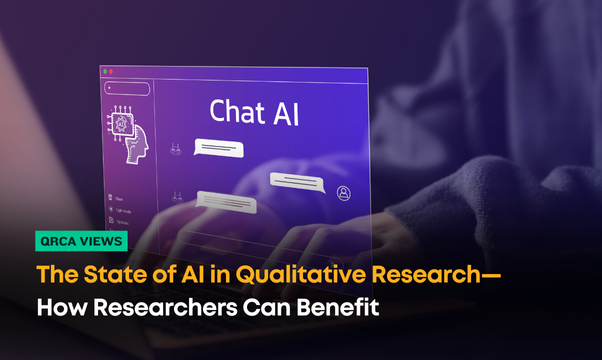
AI-driven applications for qualitative research are being developed at the speed of light, coming out so quickly that it’s difficult for researchers to keep up. Author Renée Hopkins looks at the current state of AI in qualitative market research and how it’s benefiting researchers.
Renée Hopkins

Qualitative researchers play multiple roles simultaneously – moderator, analyst, insight-miner, client-service person, project-manager. While doing QDA yourself can be a robust and satisfying experience; it is definitely not the best use of your time when faced with such an array of demands.
Researchers manage the balance between speed and rigour in their qualitative research report writing process through several strategies and tools. The approach can vary depending on the project size, type, and specific client needs. Timelines play an important role, too. Sometimes, full report may not be required for decision-making. Researchers focus on ensuring that study findings do not lose their relevance by managing timelines. Exploratory studies might require more detailed analysis, while

Online Qualitative Research (OQR) is transforming how we gather and analyze consumer insights, making research more accessible, efficient, and insightful. Explore the benefits and applications of OQR in our in-depth guide.
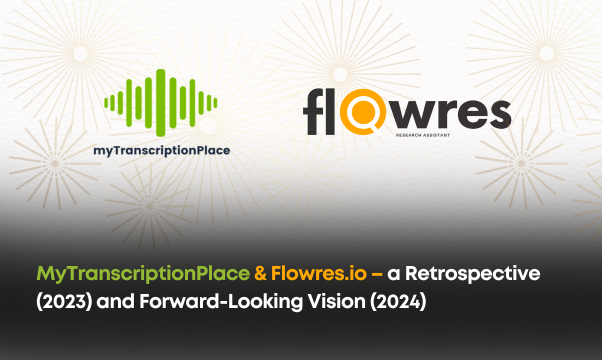
2023 was a year of growth & inspiration for MyTranscriptionPlace & Flowres.io! We honed AI transcription, built a Research Hub for Zoom, & launched powerful analysis tools. Explore what we will be unveiling in 2024! #QDA #QualitativeResearch
Maniish Karve
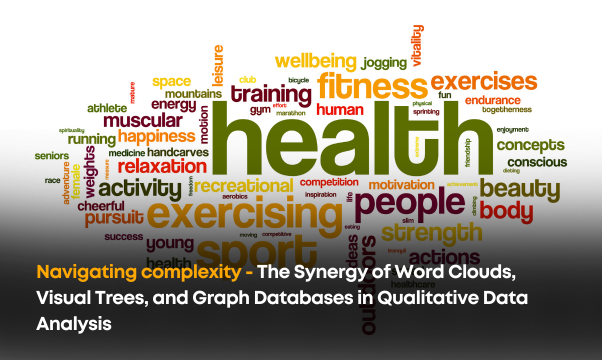
We have come across a frequent need for qualitative researchers to explore voluminous text data and elicit insights visually in an seamless, integrated manner. In this blog, we will touch upon the types and applications of word clouds, visual trees and graph databases individually before illustrating how their synergy can generate deeper insights in the context of pharma market research. We'll also delve into a compelling case study where these techniques converged to answer a critical research

The debate of AI vs human beings seems to be settling. Its very clear that AI is here to augment the human beings not replace them. How can you work in tandem with Generative AI and make the best of both worlds? This article is an effort to deep dive into this question.
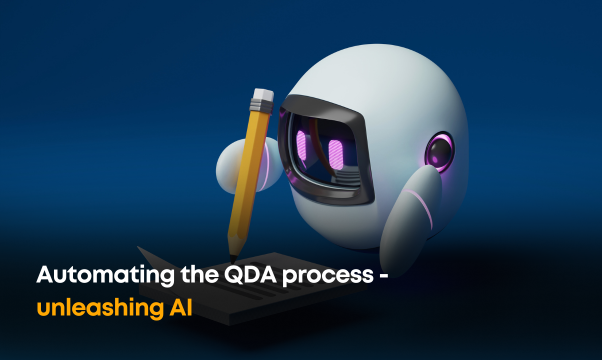
Automating QDA - the concluding blog of the series on Generative AI and QDA. Let's review what flowres is doing to automate the QDA process. I am going to close out this series on Generative AI and QDA (do I hear a collective sigh of relief??) by talking about different aspects of automating the qualitative research process in general, and the QDA process in particular.

Generative AI, as has been done to death already, offers a great opportunity for launching QDA into the next orbit. But what does it actually take, and how should you prepare, forms the basis of this series of blogs. In this blog, we explore the overwhelming need for a co-pilot emerging. That is, someone who understands the fast evolving AI space, can connect the dots from an applicability standpoint, is able to generate and analyze output, and can also understand the risks involved in using a
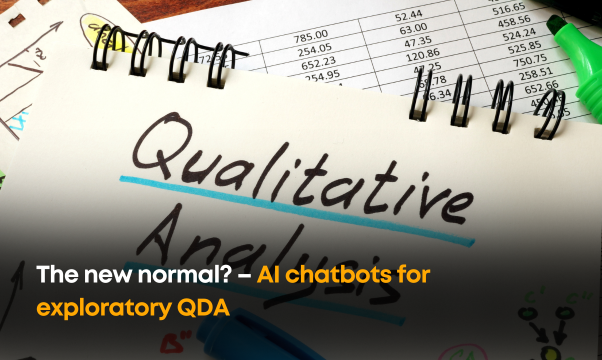
This blog explores AI Chatbots like ChatGPT and BARD for Exploratory Data Analysis of Qualitative Data. Since there are vast amounts of text involved, QDA exploration can be time consuming in traditional ways, plus very effort intensive. The blog outlines how this can be accomplished with some real-world examples. You will get to see prompts and output, some visualization and the works. Read on ...

Qualitative Researchers need to understand the opportunities and challenges that Generative AI poses so they can have an informed say in how AI is adopted by clients, and agencies.

As a researcher, extracting insights from qualitative, guided interactions is a very intensive and time-consuming process. Even if we are referring to notes instead of actual transcripts, the sheer volume of text to go through is enormous. Extracting the obvious themes, and the underlying subtext, subtleties and nuances of the data is necessary. And there is no real alternative to reading, and reading again, is there? This is how most of us started out.
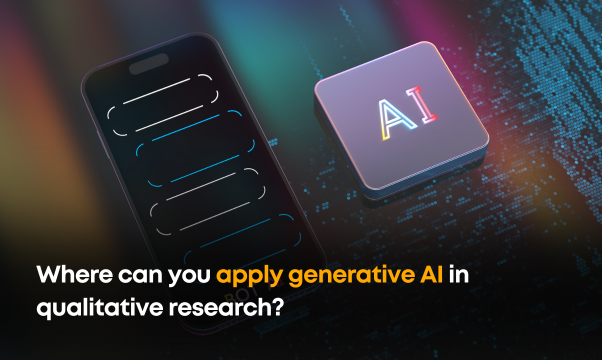
Explore the evolution of AI-powered speech recognition, its current limitations, and the advancements that have shaped the field. Join us on a journey of understanding how speech technology is revolutionizing the world of qualitative research.
In this case study, we explore how our Flowres facilitated efficient video editing and timely delivery of valuable insights for a large appliance manufacturer. By leveraging the capabilities of the platform, our client successfully delivered several Vox pop format videos that were used for showcasing within their marketing team

Conducting healthcare qualitative research in diverse regions can present unique challenges, especially when it comes to distributing incentives to doctors and patients. A prominent India based healthcare research organization, successfully leveraged the capabilities of flowres.io to streamline and optimize the incentive distribution process across various South Asian countries. This case study delves into the implementation and outcomes of their experience with flowres, highlighting the platfor

In the dynamic landscape of education technology (edtech), staying ahead of the curve is crucial for success. One of our edtech clients discovered the transformative power of Flowres.io, an online qualitative research platform that streamlined their research processes and significantly improved their product development efficiency.

Discover the rise of online qualitative research in Southeast Asia and how platforms like Zoom and specialized tools like flowres.io revolutionized the way researchers conduct qualitative studies. Explore the benefits, limitations, and future possibilities in this insightful blog post.

Complete Guide to DIY Qualitative Research
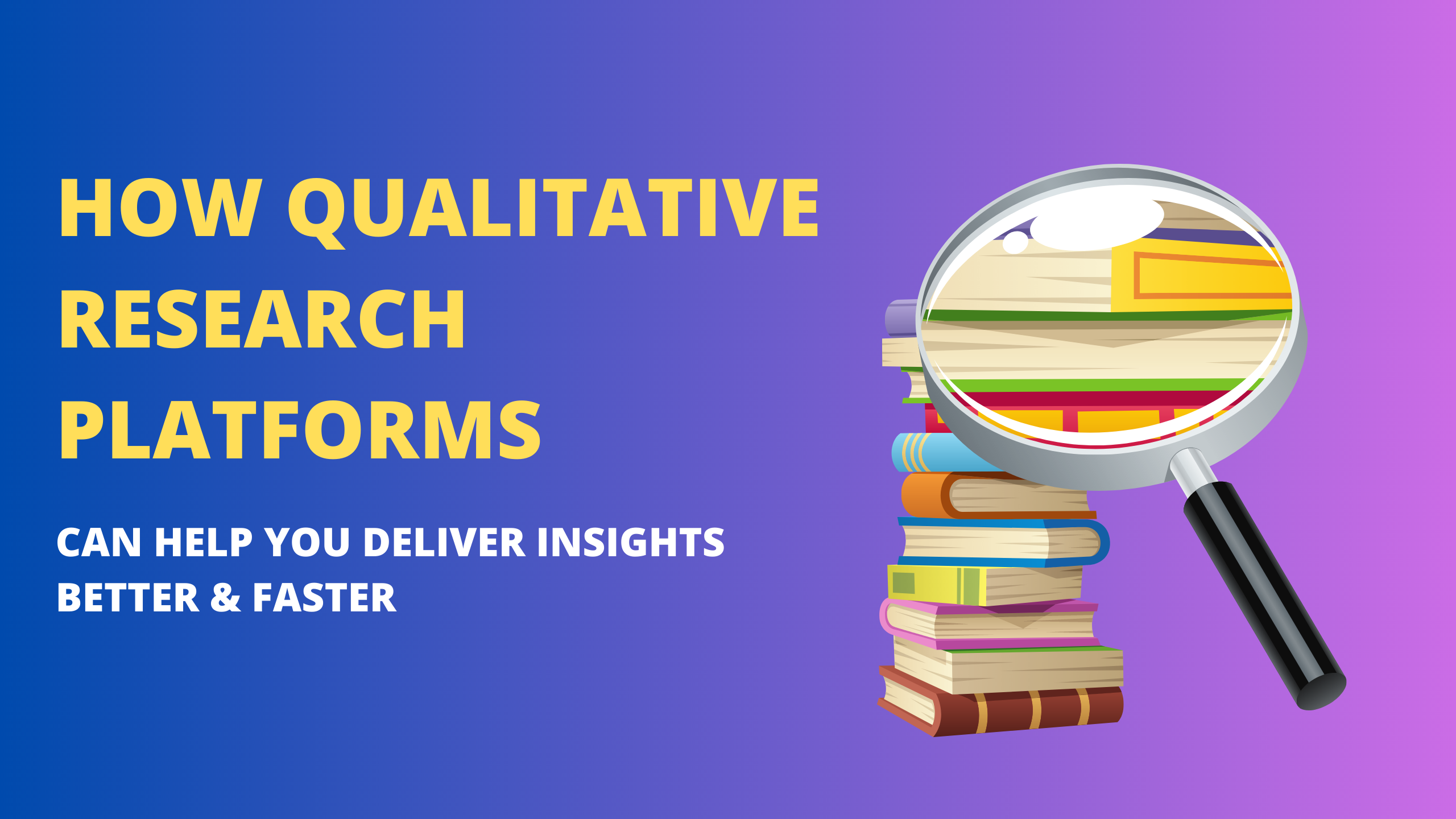
Discover how qualitative research platforms revolutionize the delivery of insights. With remote reach, real-time engagement, multimedia capabilities, efficient data management, and collaboration tools, researchers can gather better and faster insights. Dive into the transformative impact of these platforms in our blog.
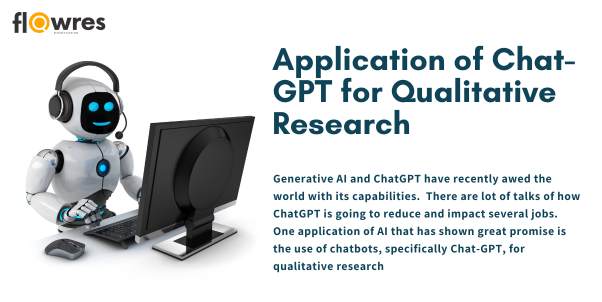
Generative AI and ChatGPT have recently awed the world with its capabilities. There are lot of talks of how ChatGPT is going to reduce and impact several jobs. As technology advances, researchers have the opportunity to integrate artificial intelligence (AI) into their research processes. One application of AI that has shown great promise is the use of chatbots, specifically Chat-GPT, for qualitative research. With its ability to understand context and generate coherent and contextually re

how to prioritize user needs with qualitative research. Follow six steps to understand your users better and develop products and services that meet their needs.

Many small business owners in the qualitative research industry have wondered if they really need a project management system. While such a system can be beneficial for keeping teams organized, it can also be expensive and time-consuming to implement. This article examines the pros and cons of using a project management system for a boutique qualitative research outfit and suggests alternative options.

As a business owner or marketer, conducting market research is crucial for gaining insights into your target audience, understanding their needs and preferences, and making informed decisions that will help your business succeed. However, one of the biggest challenges in conducting market research is finding the right respondents to participate in your study. In this article, we will explore various ways to find your ideal respondents and ensure the success of your market research.

Market research is an integral part of any business strategy. It provides vital insights into consumer behavior, industry trends, and competition, allowing businesses to make informed decisions and stay ahead of the curve. However, communicating the value of market research to stakeholders can be challenging. In this article, we explore tips and strategies to effectively communicate the value of market research to your team, clients, or investors.

Qualitative research is an essential aspect of understanding customer behavior and preferences, and with the rise of online platforms, it has become even easier to conduct research quickly and efficiently. In this article, we will cover everything you need to know about online qualitative research platforms and how to choose the right one for your needs.

You are aware that insights regarding your target market, competition, industry trends, and most importantly your customer are invaluable, and need to be sought after through regular research. However, deciding whether to conduct the research yourself or to hire a professional agency can be a challenging. In this article, we'll explore the pros and cons of both options and provide guidance on when to involve a market research company and when to do research yourself.

By incorporating deep work into your daily routine, you can increase your productivity and achieve better results in your job as a salesperson or project manager. It may take some time and effort to develop this skill, but the benefits are well worth it. By setting clear boundaries, choosing the right tasks, and creating a conducive environment, you can find ways to incorporate deep work into your day and achieve better results in your job

To encourage participation, qualitative research organizations often use incentives to motivate participants. For example, a company may offer survey completion bonuses or gift cards as an incentive for completing a questionnaire or taking part in focus groups. However, if not done properly, these incentives can be ineffective and even counterproductive.
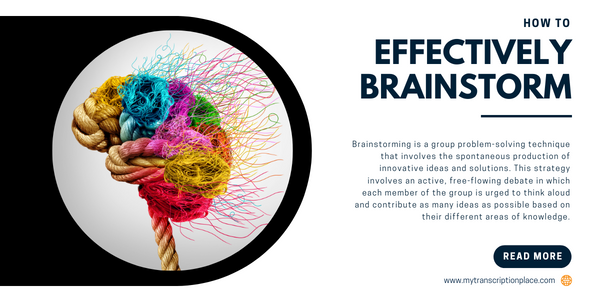
Brainstorming is a group problem-solving technique that involves the spontaneous production of innovative ideas and solutions. This strategy involves an active, free-flowing debate in which each member of the group is urged to think aloud and contribute as many ideas as possible based on their different areas of knowledge. Brainstorming is a skill that all small/big teams should master in order to hone their collective problem-solving skills. Learn about the best techniques for effective brainst
Sukanya Pant

Getting Things Done is a best-selling personal productivity system authored by David Allen. The book created a new technique for productivity and the acceptance of this method made it shoot to unprecedented fame. GTD isn't another to-do list system. GTD gives a clear recipe for how to organize your entire to-do list that works and gets things done.
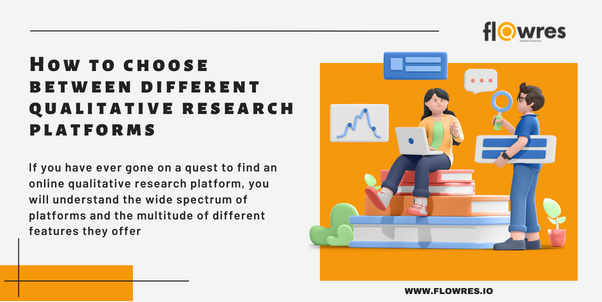
If you have ever gone on a quest to finding an online qualitative research platform, you will understand the wide spectrum of platforms and the multitude of different features they offer. The dilemma of having too many options is clearly exemplified during this search. Online qualitative platforms offer a range of different services that have nothing in common except for the fact that they are in the online mode, and don't provide numerical data.

Market research is the process of determining whether a new good or service is viable through interviews with potential customers. Organisations or corporations can use this technique to identify their target market, gather and record comments, and make wise decisions. Both online and offline research have advantages and disadvantages. Online research works best for some people, while offline research works best for others. Finally, choose what is best and most convenient for you.

A widespread belief is that we can get all kinds of respondents with the right amount of money. While that may not be untrue, research practitioners (field agencies and research agencies) should try to become more creative around participation incentivization. Traditional incentivization methods may have the same effect anymore, and research companies need to shift their focus toward incentives more suited to the younger generation.

Workflow refers to a series of activities that are necessary to be completed in the process of completing a task. The workflow includes all processes required for the successful accomplishment of a work goal. In a workflow, every step has a specific step succeeding it, except for the last step. An efficient workflow increases productivity, while at the same time minimizing time, effort and materials required.

A very large number of individuals follow the Pomodoro method to increase their productivity. It has proven to be a great time saver and increases the amount of work done in a day. Try practicing the Pomodoro technique yourself, and maybe it could surprise you as well!

flowres provides interactive transcripts at honest prices, making your qualitative research data accessible and well collated. With easy to use features, using interactive transcripts by flowres can open the gates to faster and much more effortless qualitative research analysis. Reach out to [email protected] to learn more about employing interactive transcripts to fulfil your qualitative research requirements.

In the world of market research, qualitative research plays a major role in ascertaining and understanding user experience. Qualitative research involves the collection and analysing of non-numerical data, which includes attitudes, experiences, and ideas. Qualitative research can be in the form of text, audio or video.
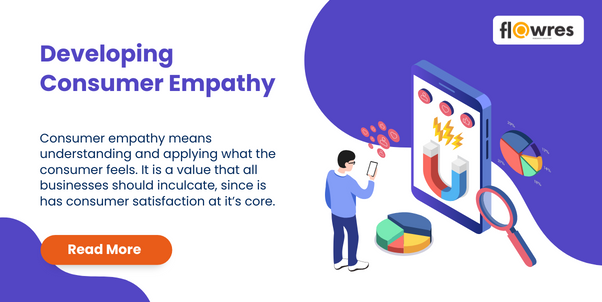
Empathy is when one can put oneself in another’s shoes, and truly feel what they’re feeling. Empathy means feeling what the other is feeling, and actively understanding their emotions. Consumer empathy too, means understanding and applying what the consumer feels. It is a value that all businesses should inculcate, since is has consumer satisfaction at it’s core.
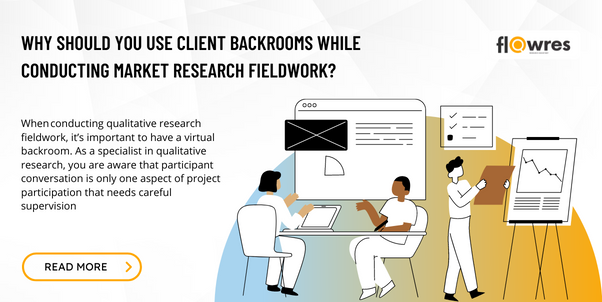
Flowres provides a virtual client backroom for all the Zoom meetings at a nominal cost. Now you can convert your Zoom meetings into more professional market research meetings without burning a hole in your research budget. Reach out to [email protected] to know more about how flowres can make your research efficient more efficient and hassle free.
Ekta Sisodiya

Online focus groups are a great way to get feedback from a large number of people quickly and easily. The future of research will undoubtedly involve conducting focus groups online. However, to ensure that the focus group is effective, it is important to moderate it effectively. In order to do this, you should make sure that the group is organized and that the participants are engaged. You should also make sure that the discussion is on track and that everyone has a chance to participate.

Although they merely skim the surface, these strategies can help you get your user research projects off the ground. The most crucial thing is to be certain of what you want to learn and to use the technique you believe will lead to the quickest and most insightful realizations. If not, you risk wasting a lot of time gathering and studying data that isn't really necessary.

Because organizations are intricate social systems, research findings frequently have trouble getting from the researcher to the people who need to hear them. Many researchers hope that their research will have some impact on policy. There are many ways to increase consumption of research, and it is important to select the ones that will help you reach the audience you most want to impact.

A qualitative researcher must understand a situation through close observation and analysis. They will draw on methods for triangulating data, using both quantitative and qualitative research processes. They are charged with eliciting an in-depth understanding of topics from their participants but also have a responsibility to ensure that the process is ethical and respectful of cultural values.

If you are running a market research agency, you're familiar with the fast-paced work environment—your staff needs to work quickly and thoughtfully while managing internal and external expectations. It's not an easy task. And then, there is the ever-changing role of technology in our lives.

The concept of ‘Deep Work’ may feel fancy in this constantly distracted world. Carving out few hours away from all communication devices to focus on cognitively demanding and creative tasks is not easy. So how do you really cultivate the ability to do more and more 'Deep Work'?

We live in the age of information overload, and several distractions consciously challenge our attention throughout the day. An average office worker receives 121 emails per day and sends around 40 emails for business purposes. We see about 6000 to 10000 ads every day, How do we ensure personal productivity in such challenging times?

IMAGES
COMMENTS
There are many different types of qualitative data analysis, all of which serve different purposes and have unique strengths and weaknesses. We’ll start by outlining the analysis methods and then we’ll dive into the details for each. The 6 most popular methods (or at least the ones we see at Grad Coach) are: Let’s take a look at each of them…
Jan 6, 2025 · Building on our exploration of qualitative analysis methods, let's dive deeper into grounded theory - a research approach that helps develop theories directly from data. This method is particularly valuable when investigating new or understudied topics, as it focuses on discovering theories rather than testing existing ones.
Explore qualitative data analysis with diverse methods and real-world examples. Uncover the nuances of human experiences with this guide.
Mar 25, 2024 · Qualitative research is a non-numerical method of data collection and analysis that focuses on understanding phenomena from the perspective of participants. It prioritizes depth over breadth and aims to explore the “why” and “how” behind human behaviors and social phenomena.
Qualitative data analysis can be divided into the following five categories: 1. Content analysis. This refers to the process of categorizing verbal or behavioural data to classify, summarize and tabulate the data. 2. Narrative analysis.
available for doing qualitative data analysis. This handbook intends to bridge this gap by giving an overview of methodological approaches with a strong focus on research practice in applying them to data and emphasizes the practical applica-tion of me. ast few decades, wh.
Qualitative data analysis focuses on organizing data into meaningful knowledge. What is qualitative data analysis? In simplified terms, qualitative research methods involve non-numerical data collection followed by an explanation based on the attributes of the data.
Dec 13, 2024 · Explore effective methods for qualitative data analysis to uncover meaningful insights from non-numeric data in research and studies.
Facing a mountain of raw data can be daunting, but innovative methods like content analysis and narrative analysis offer structured paths through the chaos. These approaches, made easier by advanced tools specifically designed for qualitative research, help transform overwhelming amounts of information into meaningful conclusions.
Nov 7, 2024 · Data analysis in qualitative studies involves examining non-numerical data to identify patterns, themes, and insights. Researchers often use methods such as coding, thematic analysis, and narrative analysis to interpret the data collected from interviews, focus groups, and observations.